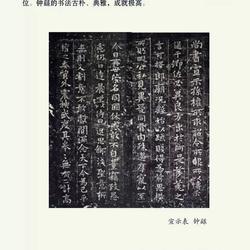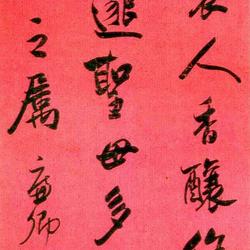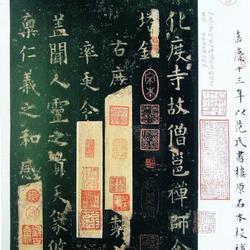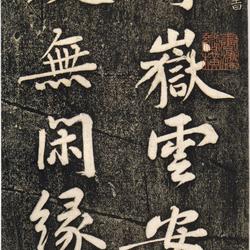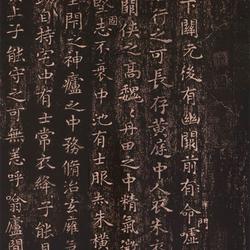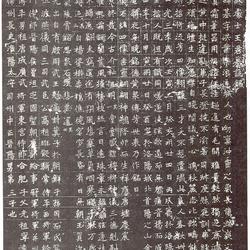The official script of the Eastern Han Dynasty. This stele is two steles carved in one stone. Also known as "the monument before and after the dawn of history", "the monument before the dawn of history", and "the monument after the dawn of history". In the second year of Jianning, the Emperor Ling of the Eastern Han Dynasty (169) was established. Official script. The front and back are divided by the front and the shadow of the stele. The stele is engraved with the full name "Lu Xiangshi Chensi Confucius's Recording Inscription", it is called "Shichen Pre-Stele", commonly known as "Zou Ming". The full name of the inscription on the stele is the Stele of the Confucius Temple of Lu Xiangshi's Morning Food, and it is called the Stele of the Back of Shichen. The front stele was carved in March in the second year of Jianning in the Eastern Han Dynasty (166). Line 17 with 36 words in line. The back stele was inscribed in April of the first year of Jianning (165 years). Line 14 with 36 words in line. The existing Confucian Temple in Qufu, Shandong. The content is to record the facts of Confucian worship and worship activities. Because the project of replenishing the wall and channeling the ditch, establishing the city’s affairs, and keeping the local officials is a secondary and non-temporary activity, there is a big difference between the three characters in the "Houbei" and the last characters. The two tablets are written by one person. This stele is also known as the three famous steles of the Confucian Temple along with "Ritual Instruments" and "Yiying". In the book "Fen Li Ou Cun", the Qing Wan Jing commented on the calligraphy of this stele as "closely repaired and elegant", "its character should be in the "Shi Shi" (Yiying Stele) and "Han Chi" (Ritual Vessel Stele) ) Right.” Fang Shuo commented that “calligraphy is grand and profound, deep in ancient times, and full of structure and meaning. It is the product of temples, eight-point authentic.” The inscription is almost a thousand words, the weather and the Mu, It is one of the famous monuments of the Han Dynasty. Kang Youwei commented that this stele is a kind of imaginary harmony. It has a delicate and elegant style in the Han stele of the Fen Li script. The strokes can be divided into two or three strokes. The pen is rounded and soft and moist. It is the standard rule for later generations to follow. There are many rubbings of this stele, from the early Ming to the middle of the Qing Dynasty, there are not more than a hundred copies. It can be seen that there is no way to call it a Han stele.
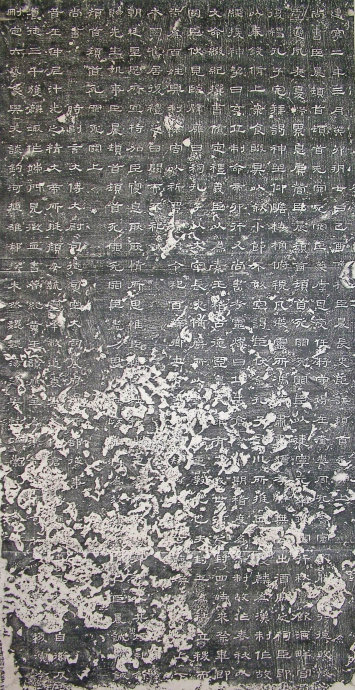
《史晨前碑》
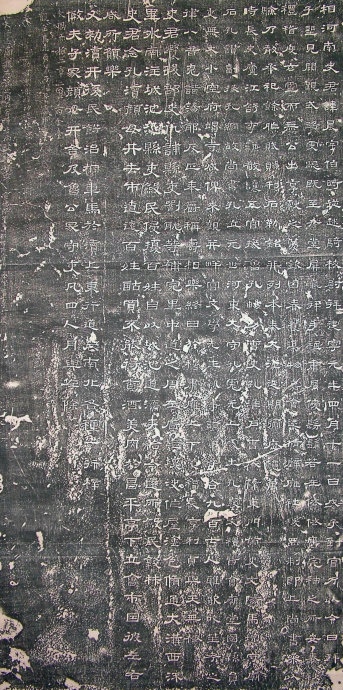
《史晨后碑》
The monument of Han Dynasty takes the ancient meaning first. This stele is thicker in ancient times than in Fenli, so natural and implicitly borrowed, it requires both "fa" and "meaning". The modern calligraphy critic Yang Shoujing commented on this stele in "Ping stele": "If people say that Han Li is not good at all, and a kind of ancient and thick atmosphere is out of reach, this is also true." This monument has a large number of characters and strict rules. It is one of the most masterpieces in Han Li, and it is regarded as an introductory model for learning to write official scripts.
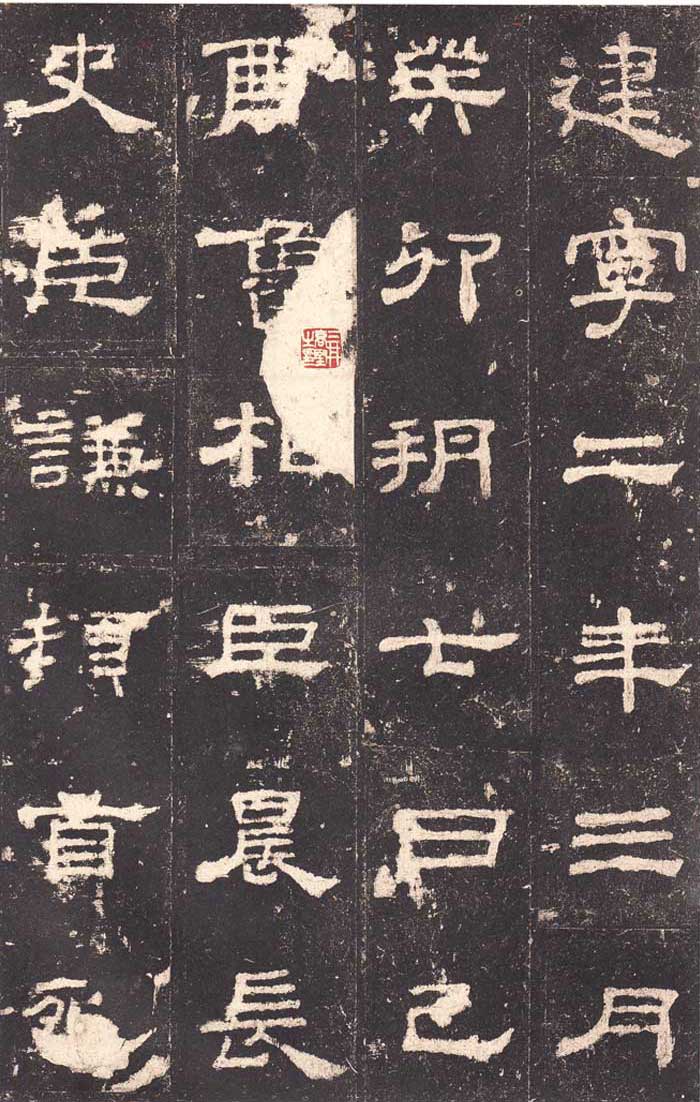
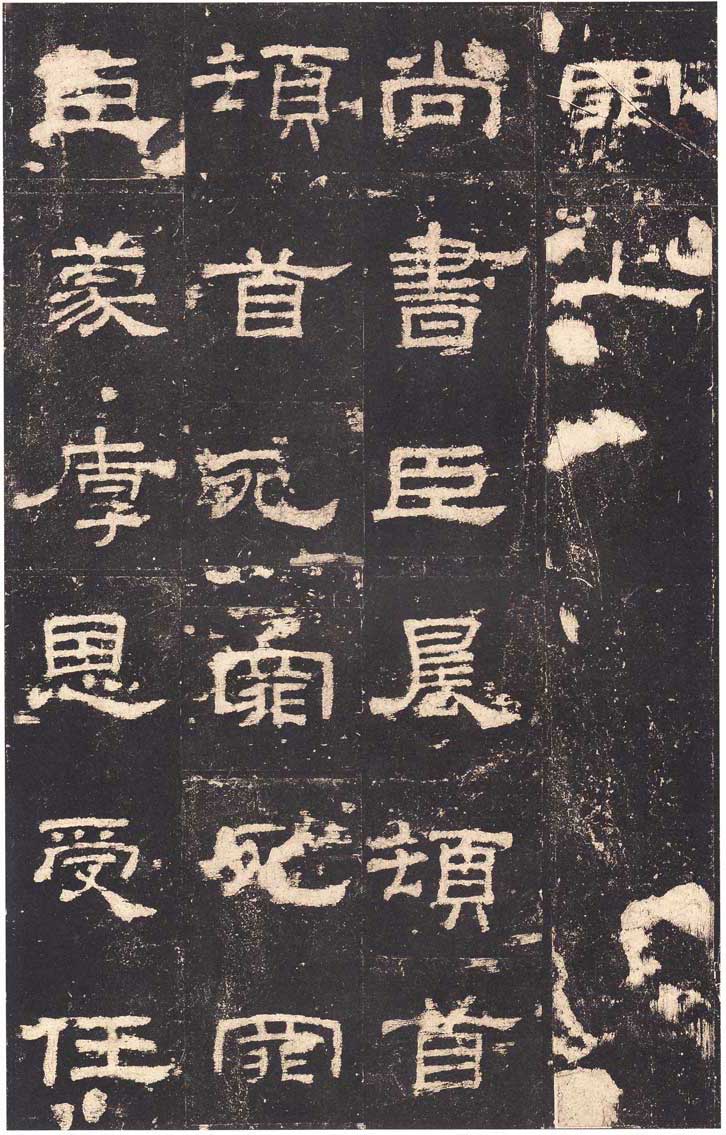
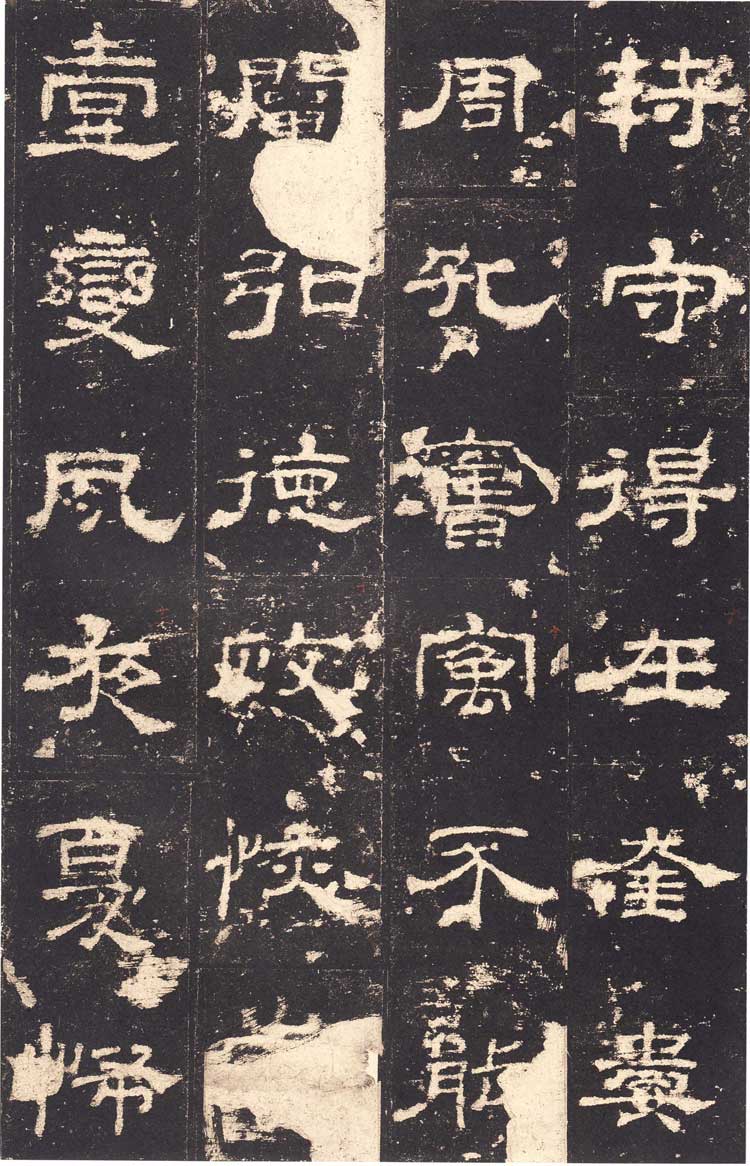
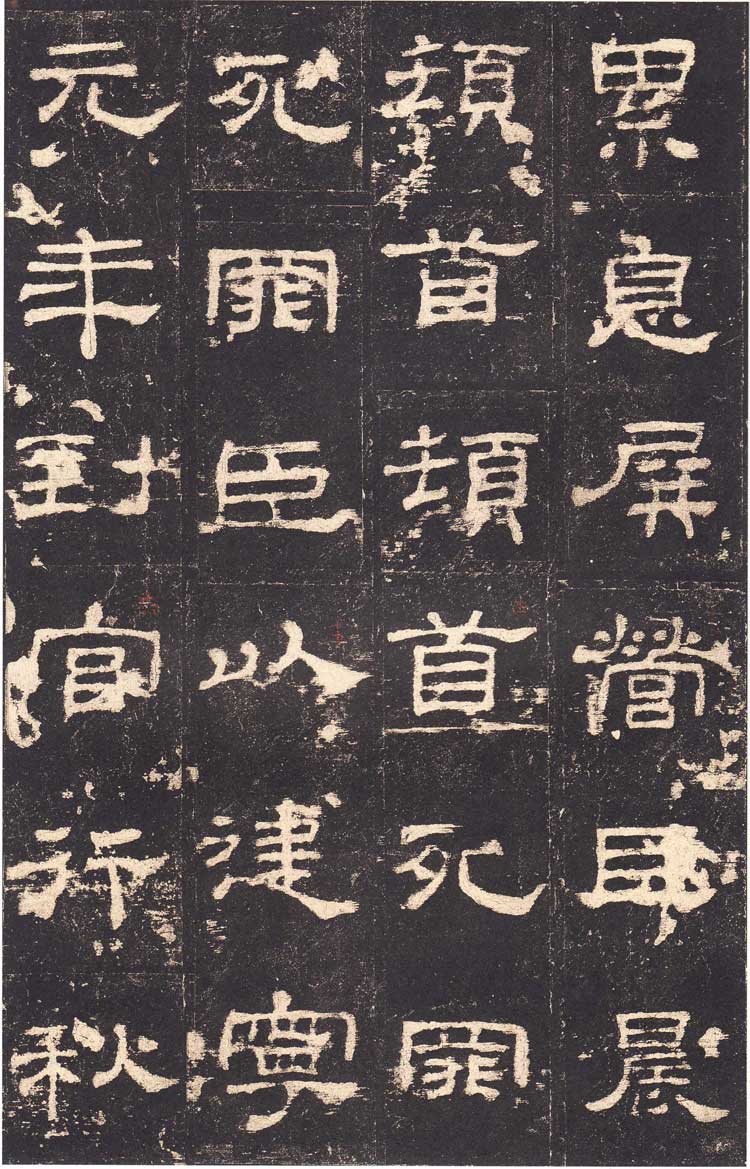
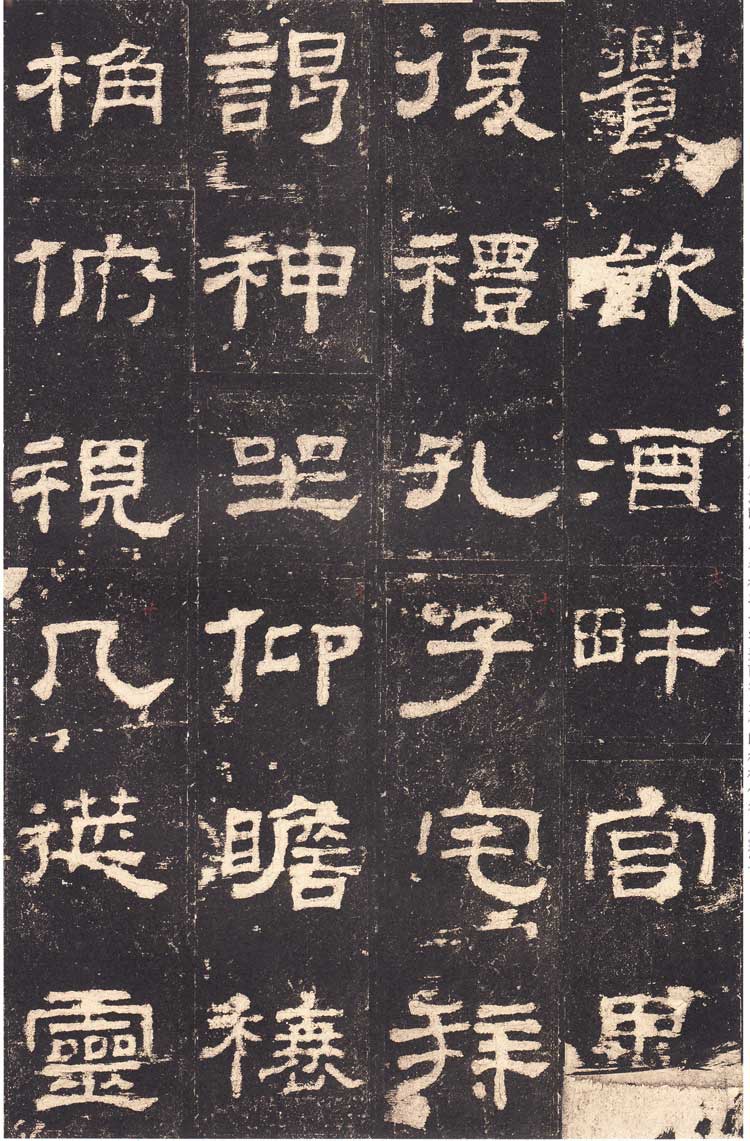
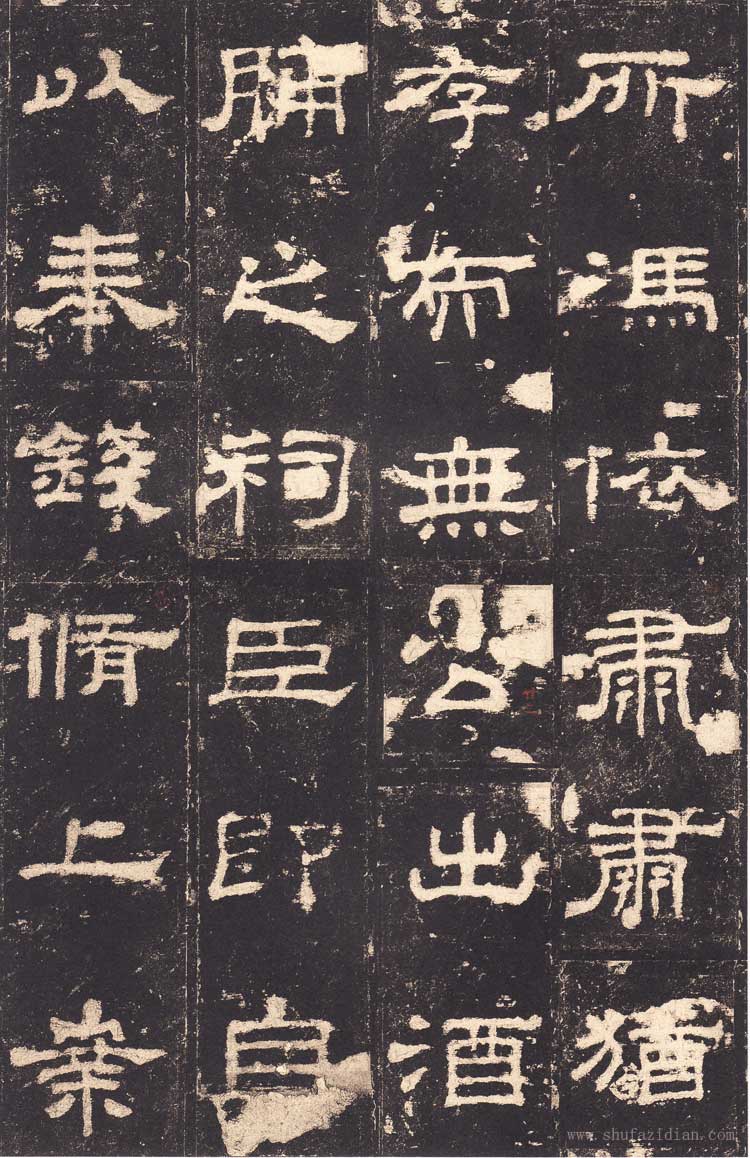
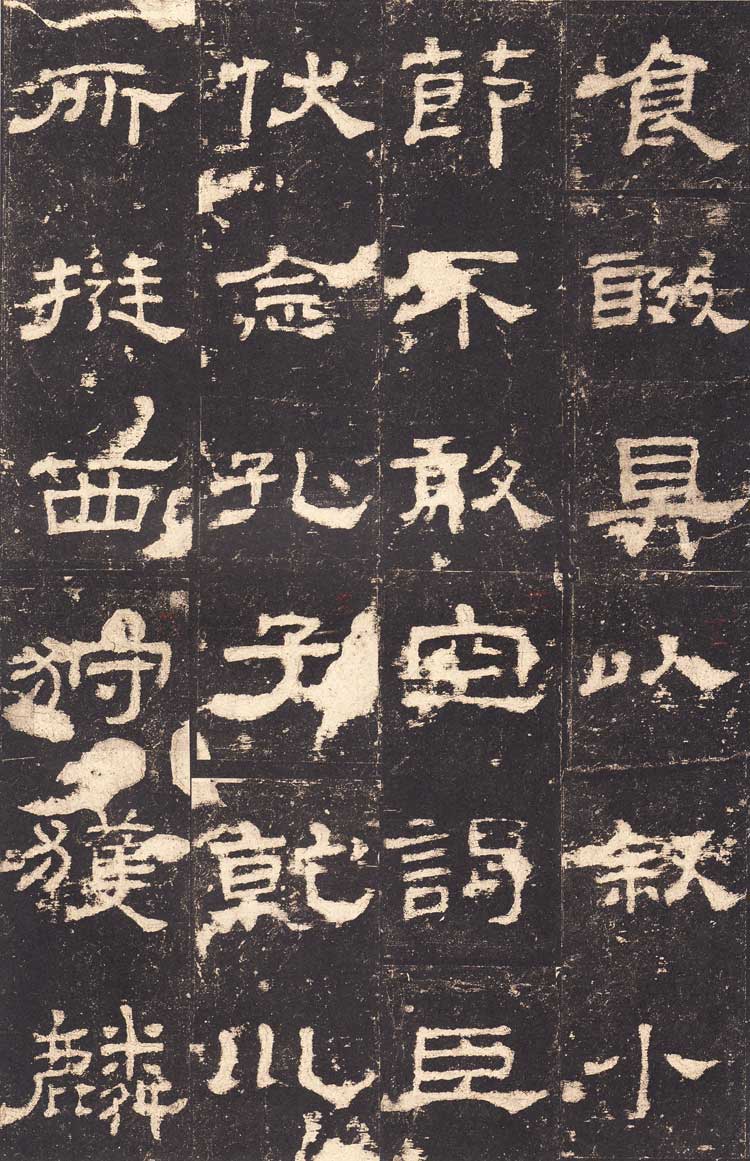
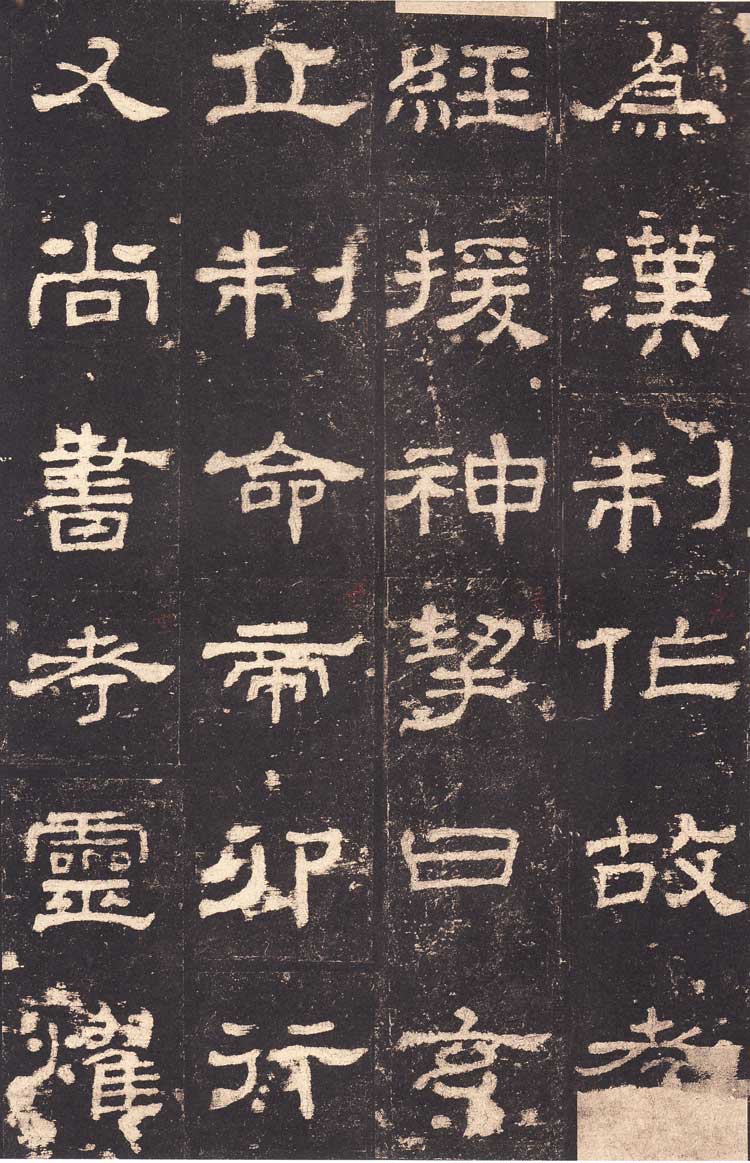
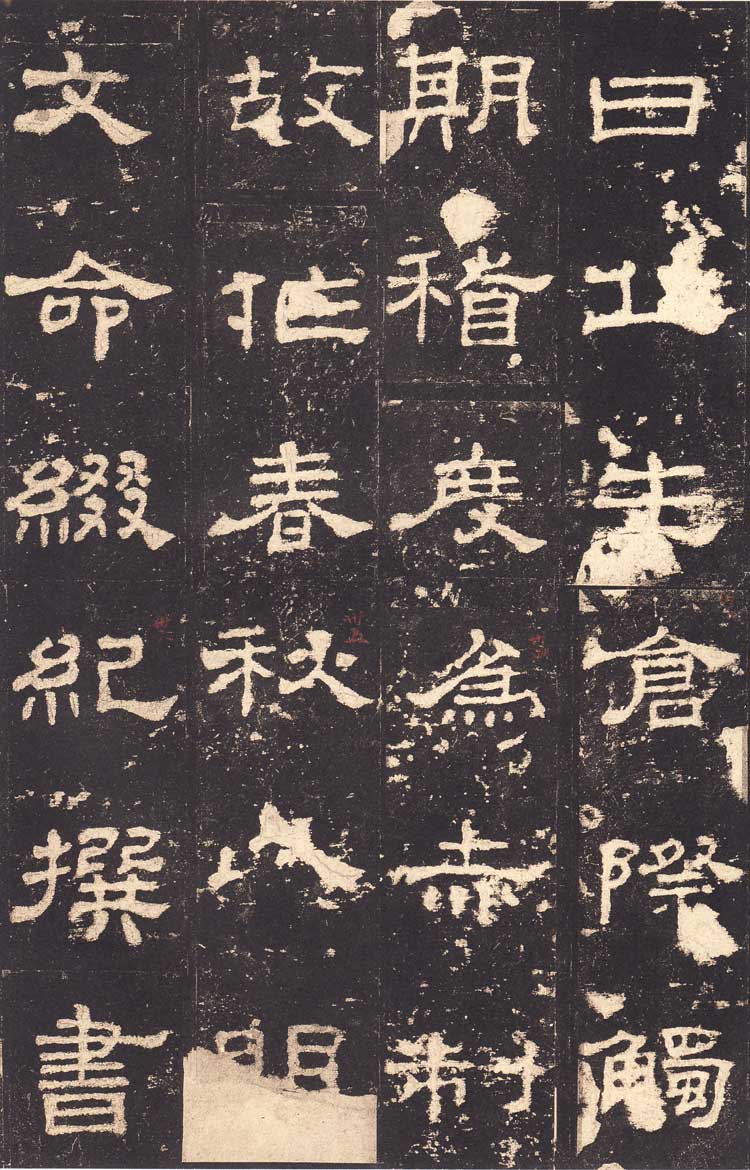
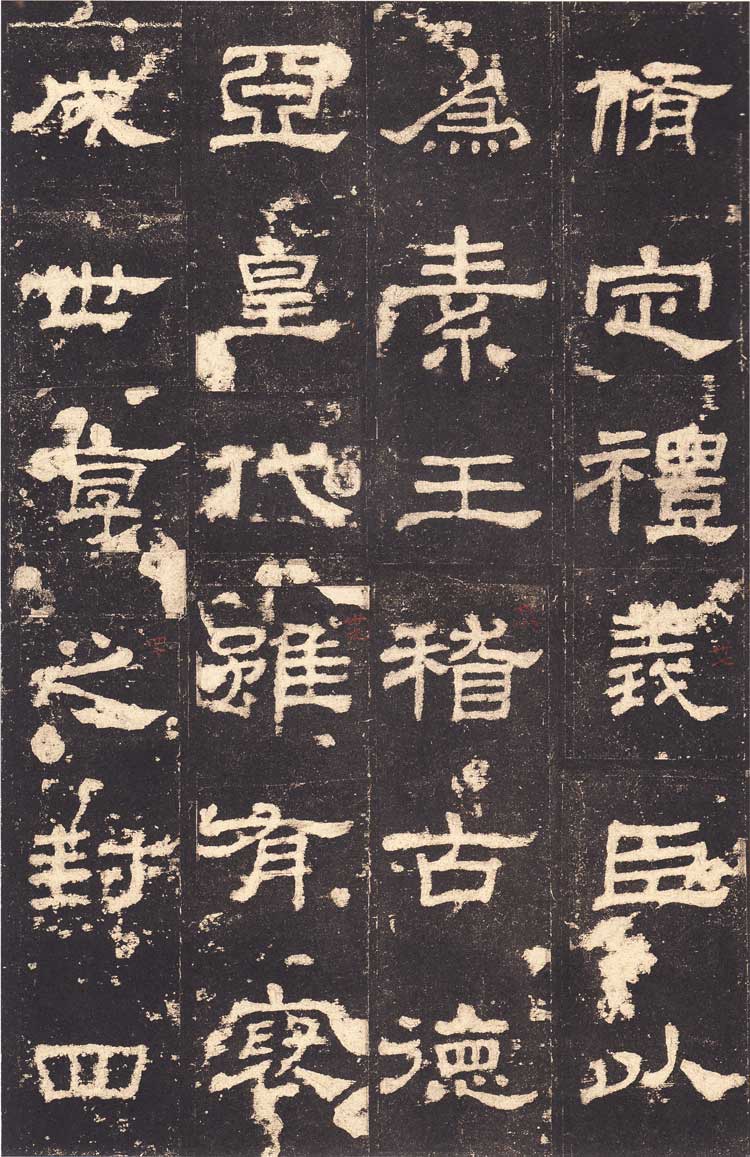
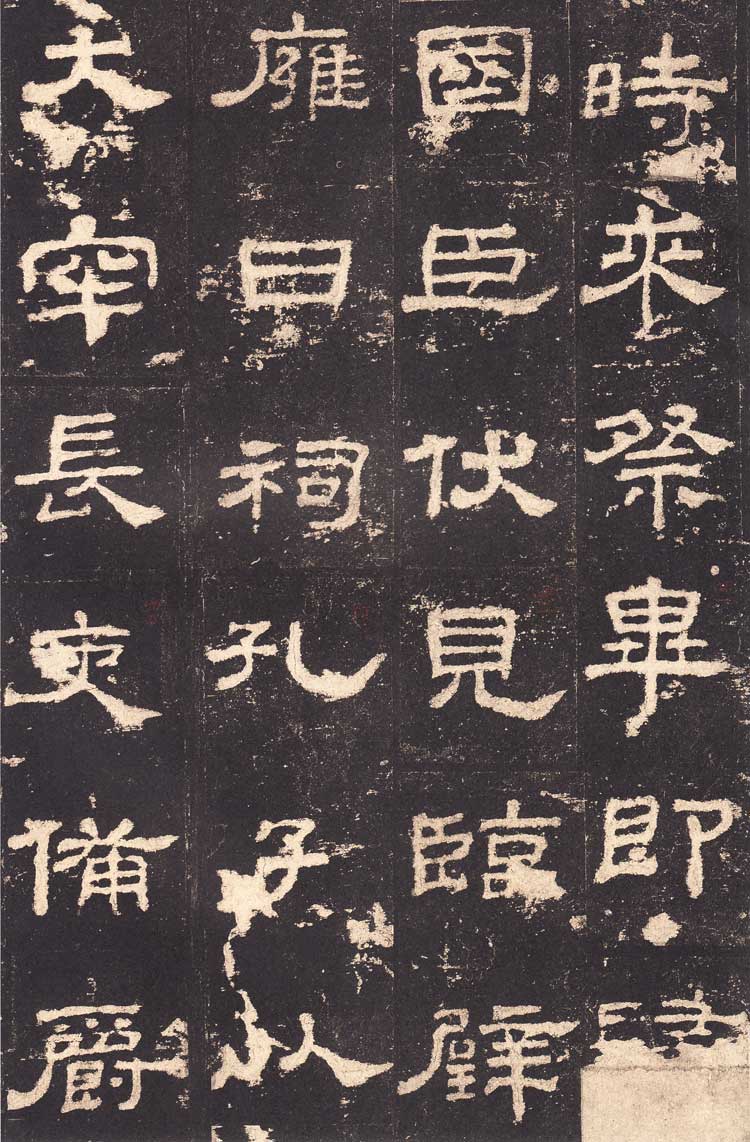
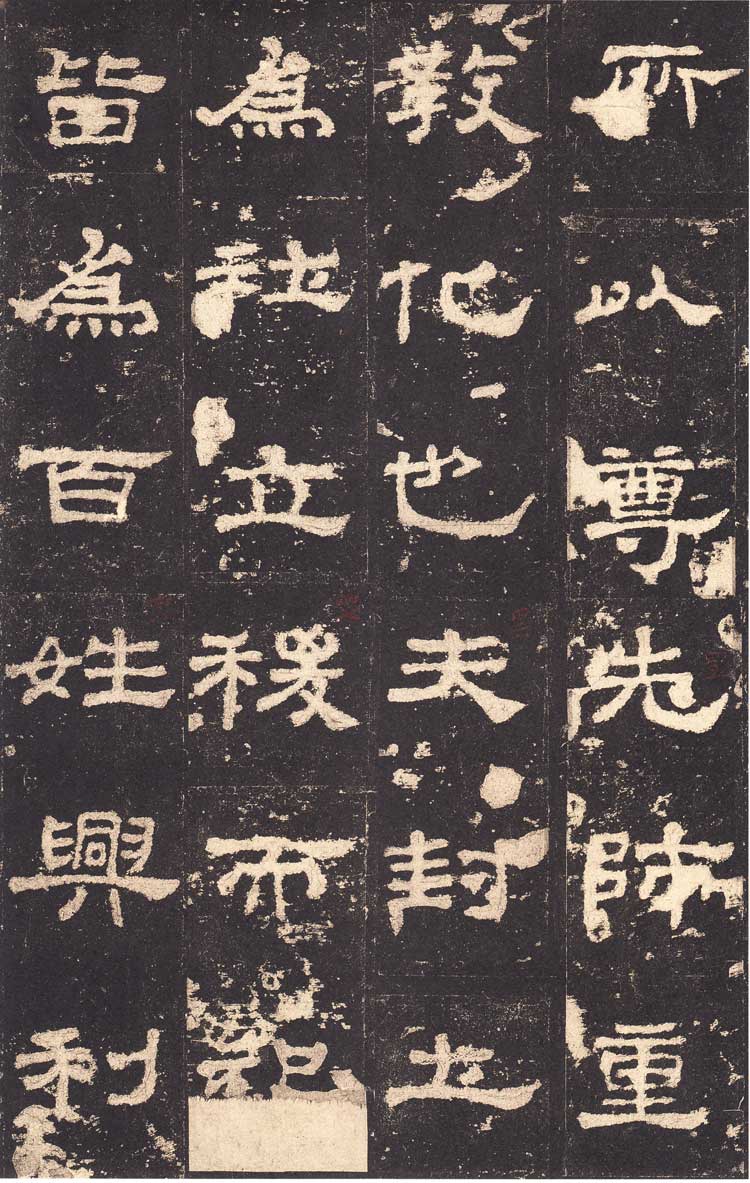
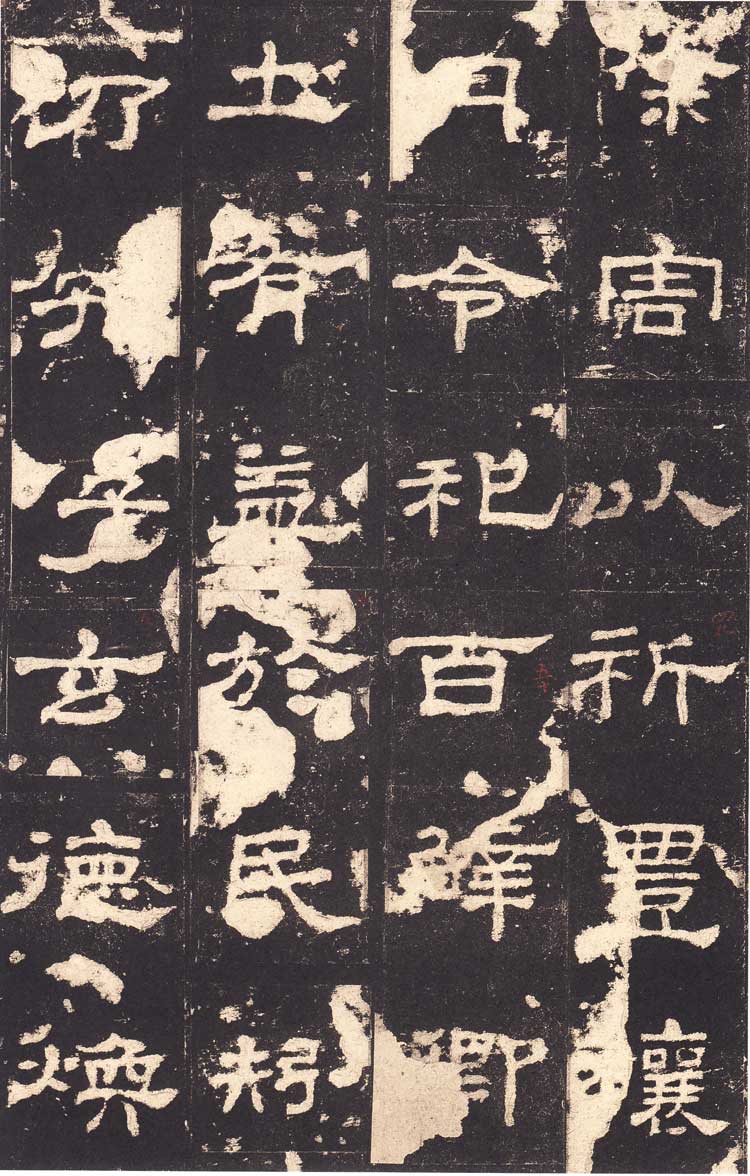
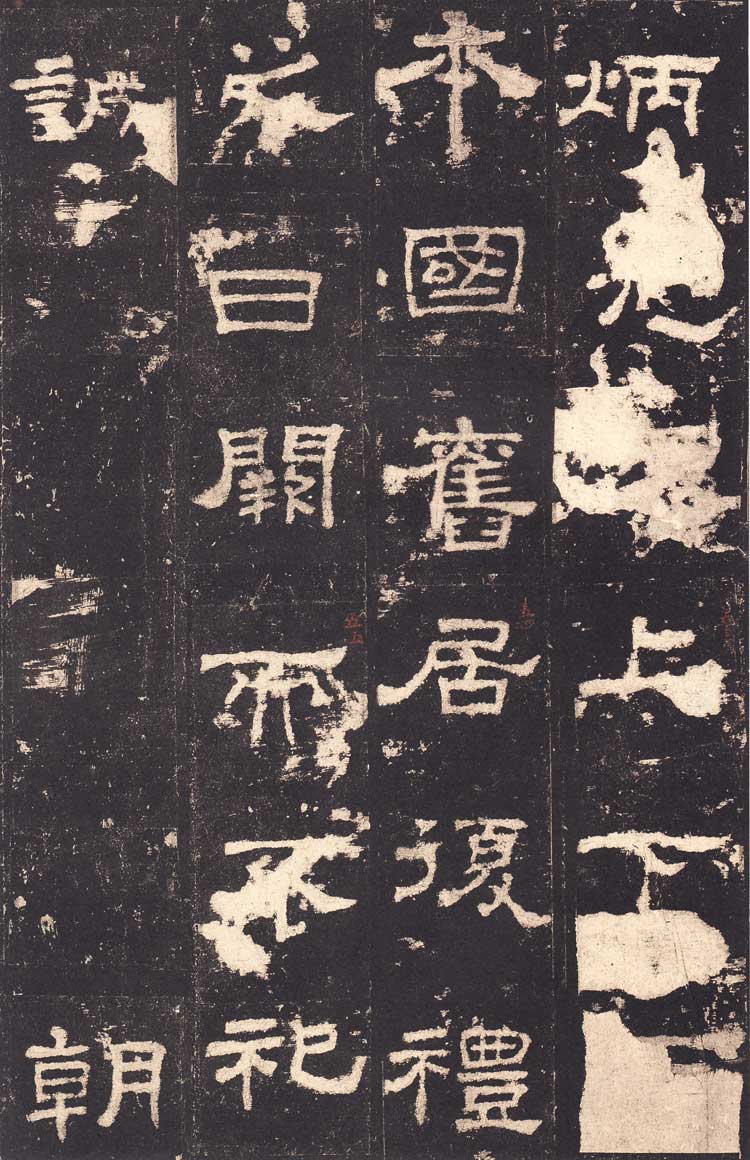
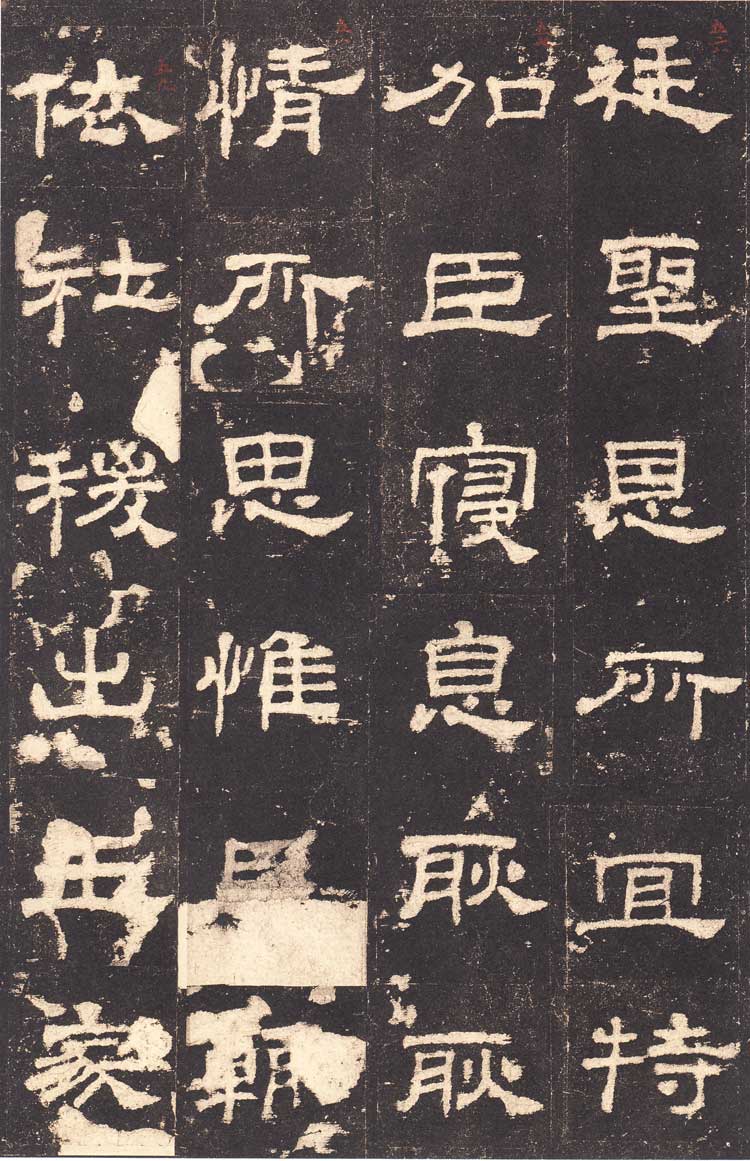
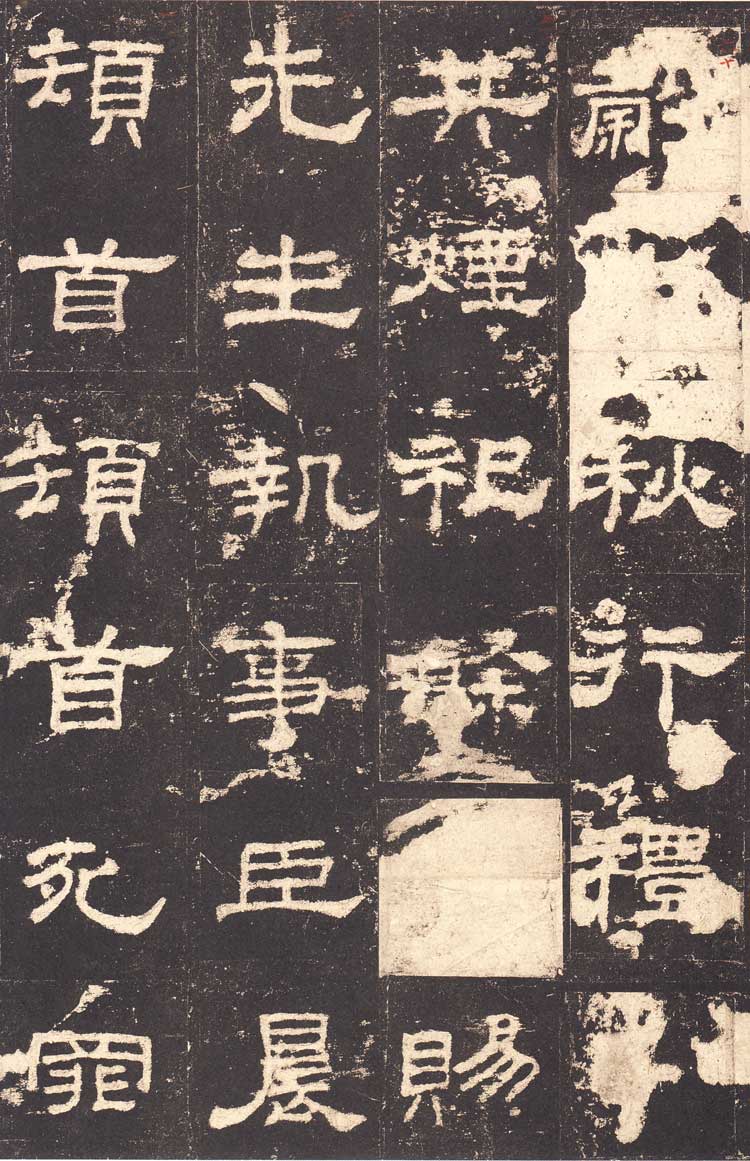
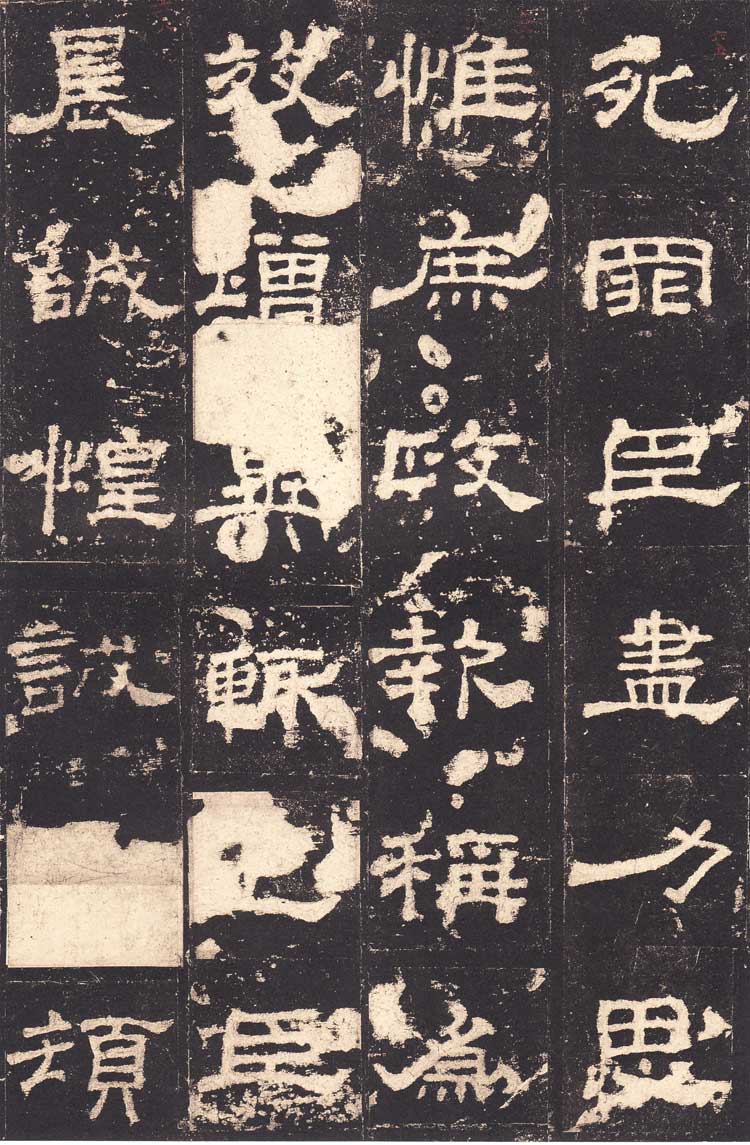
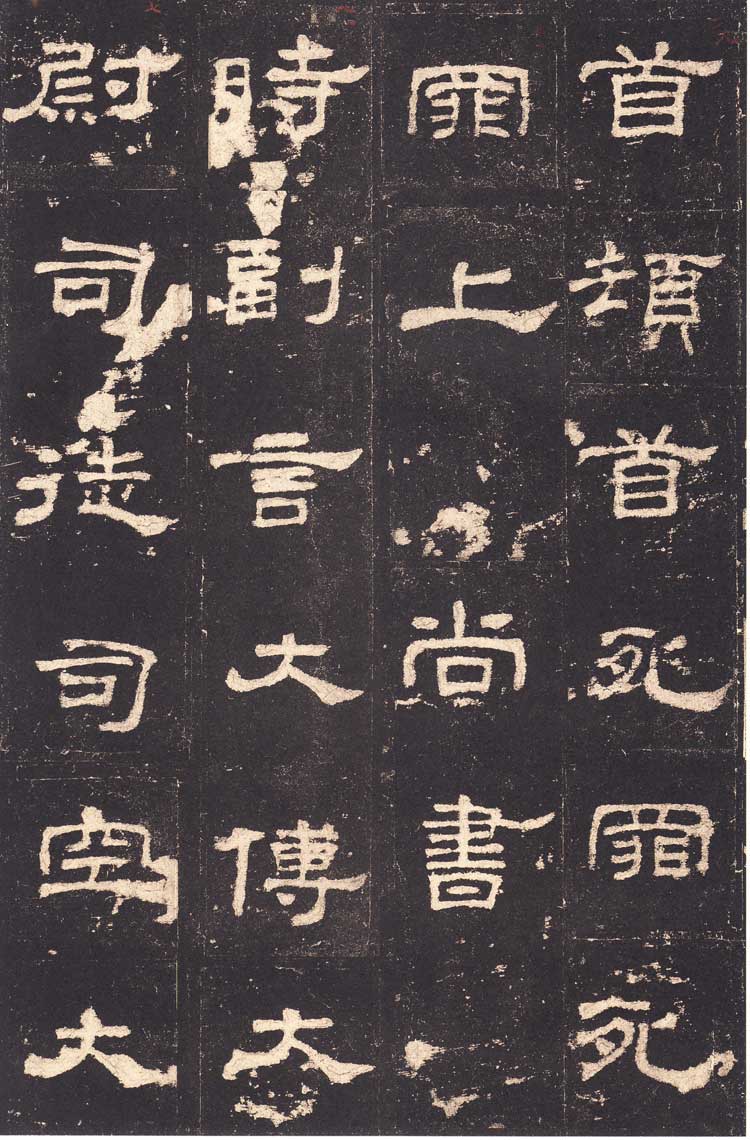
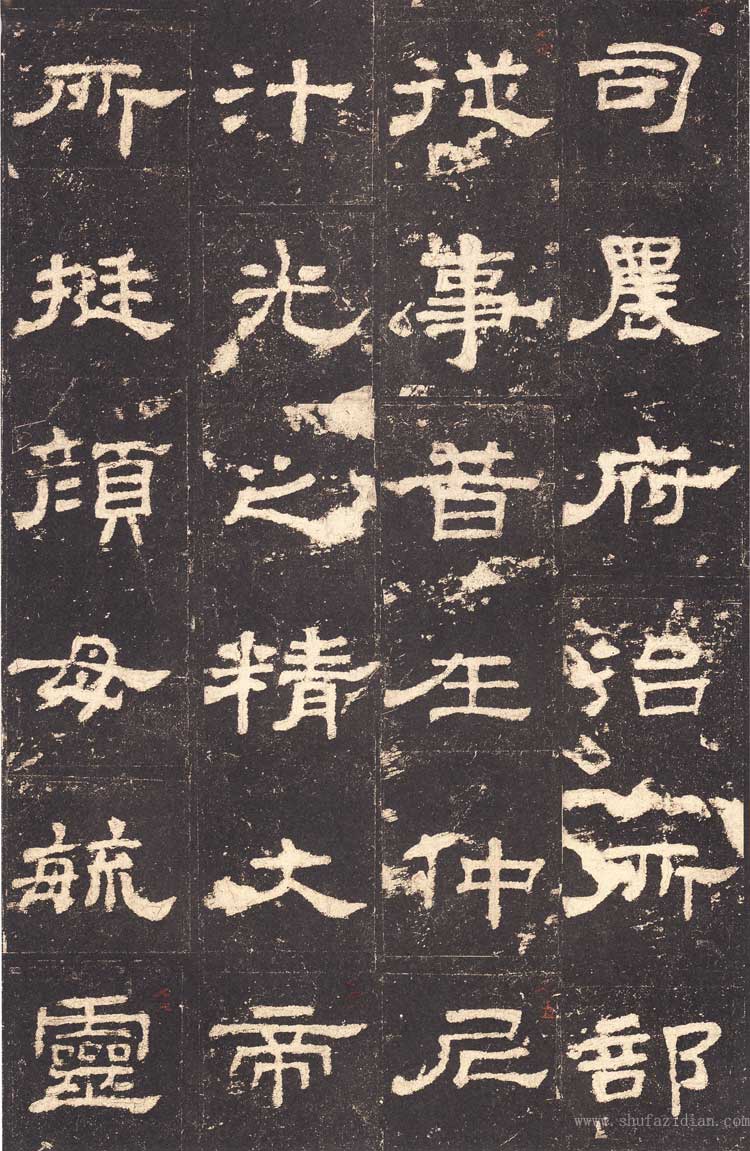
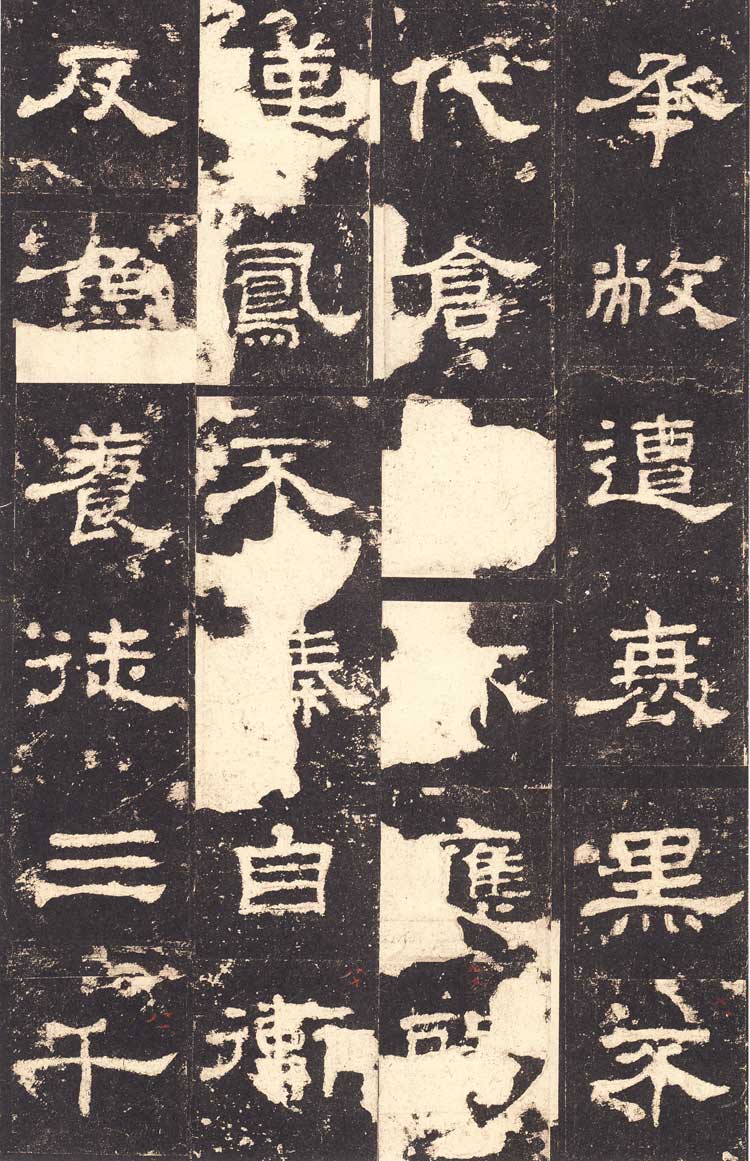
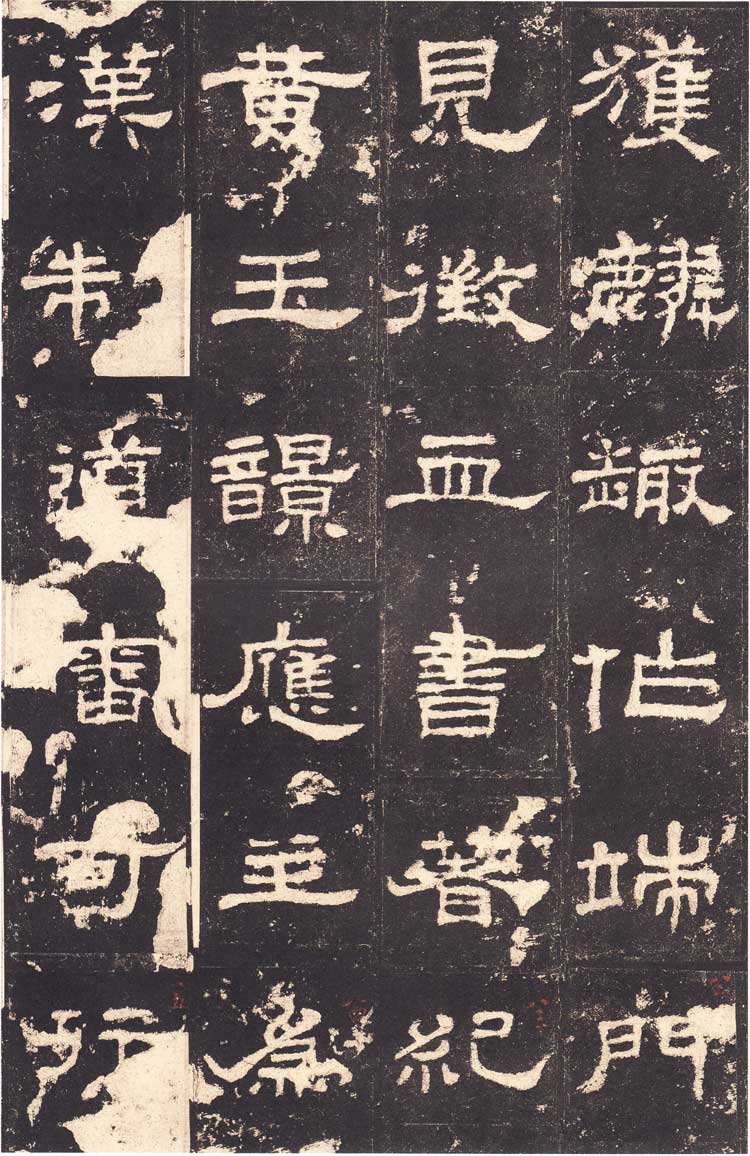
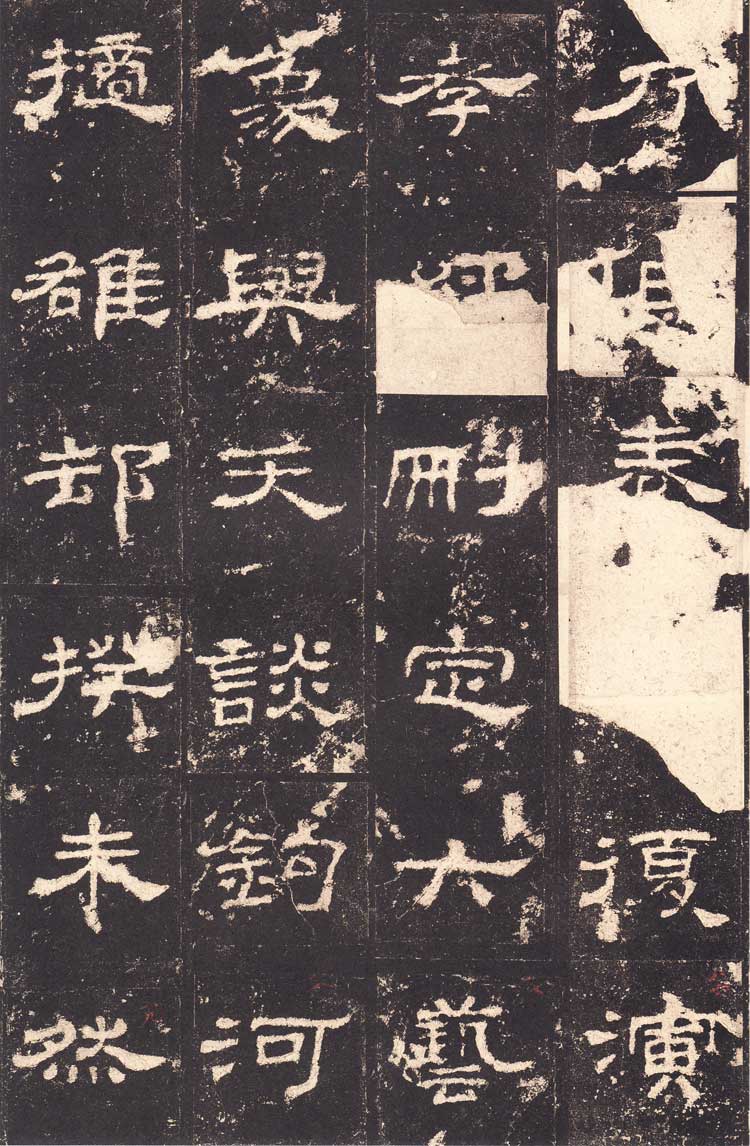
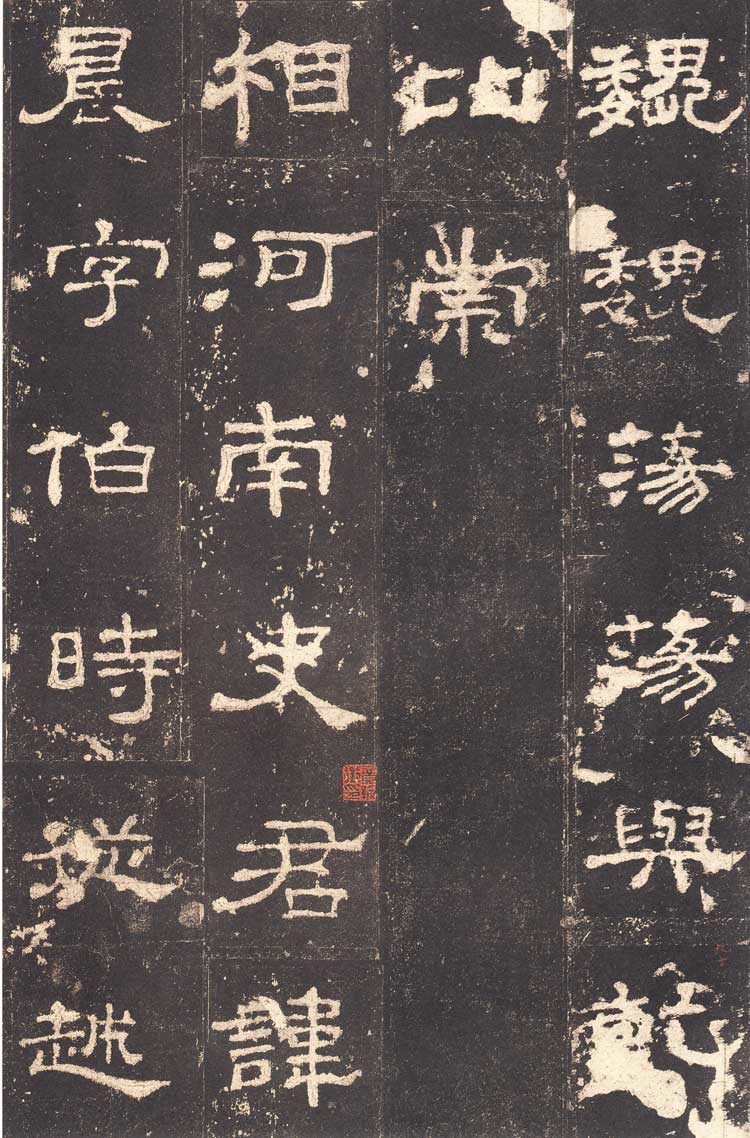
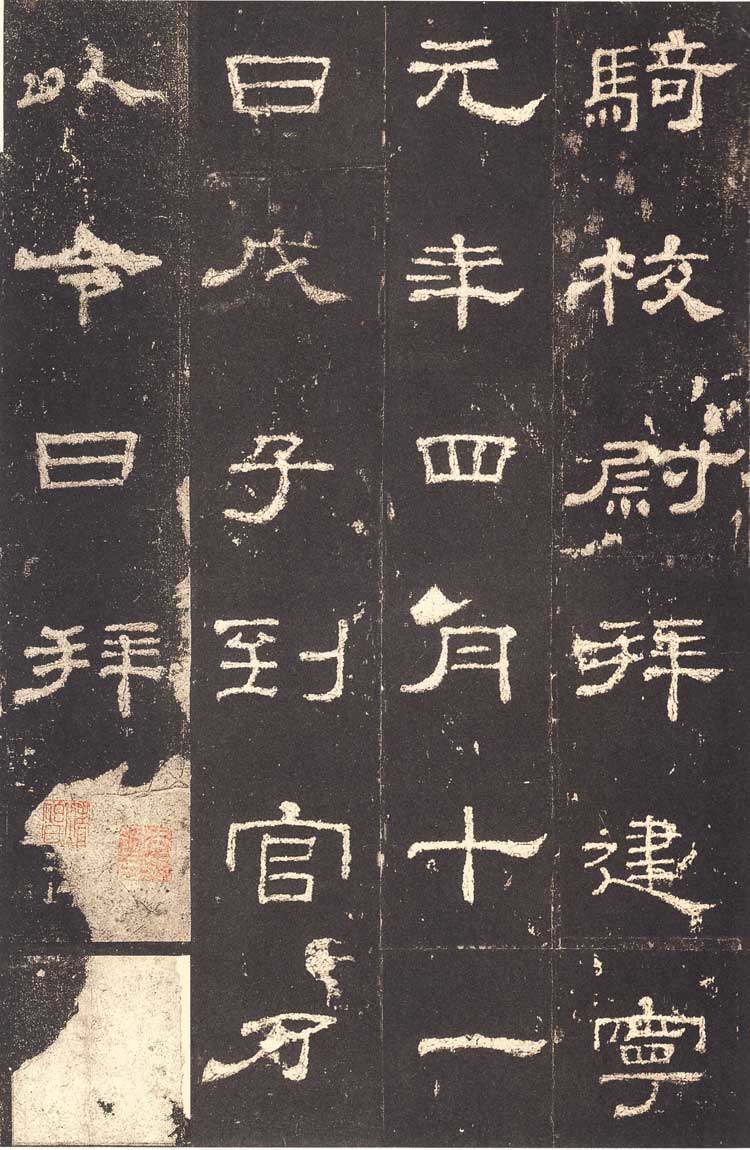
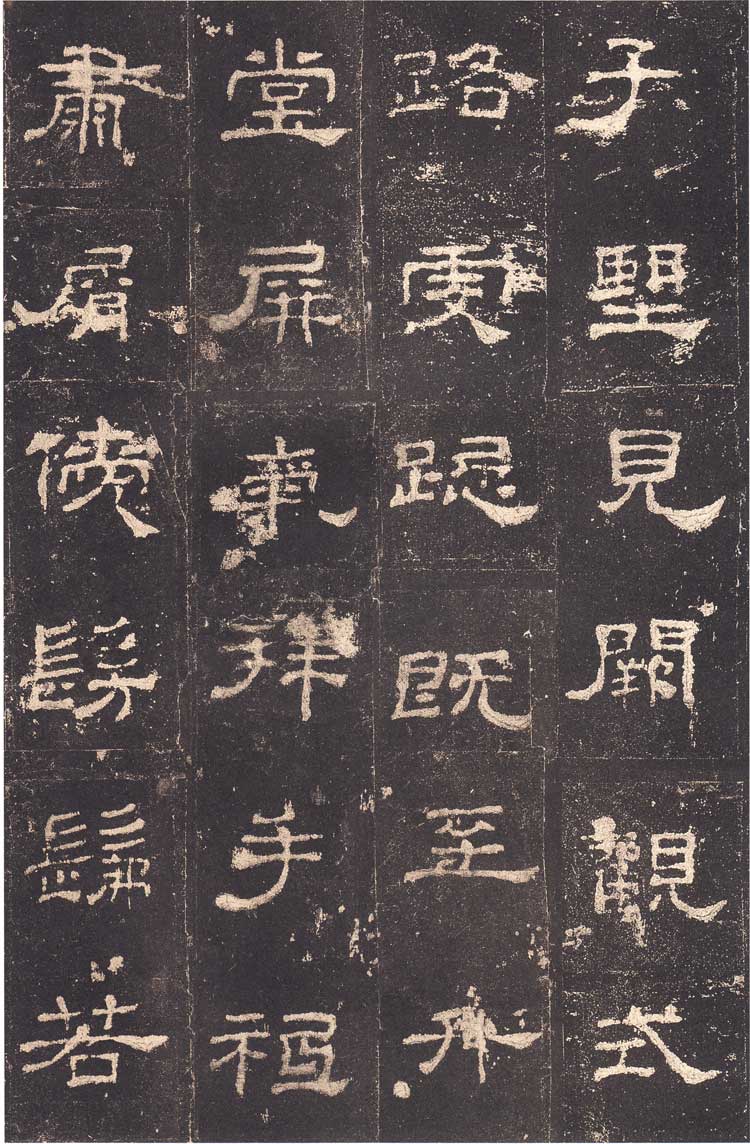
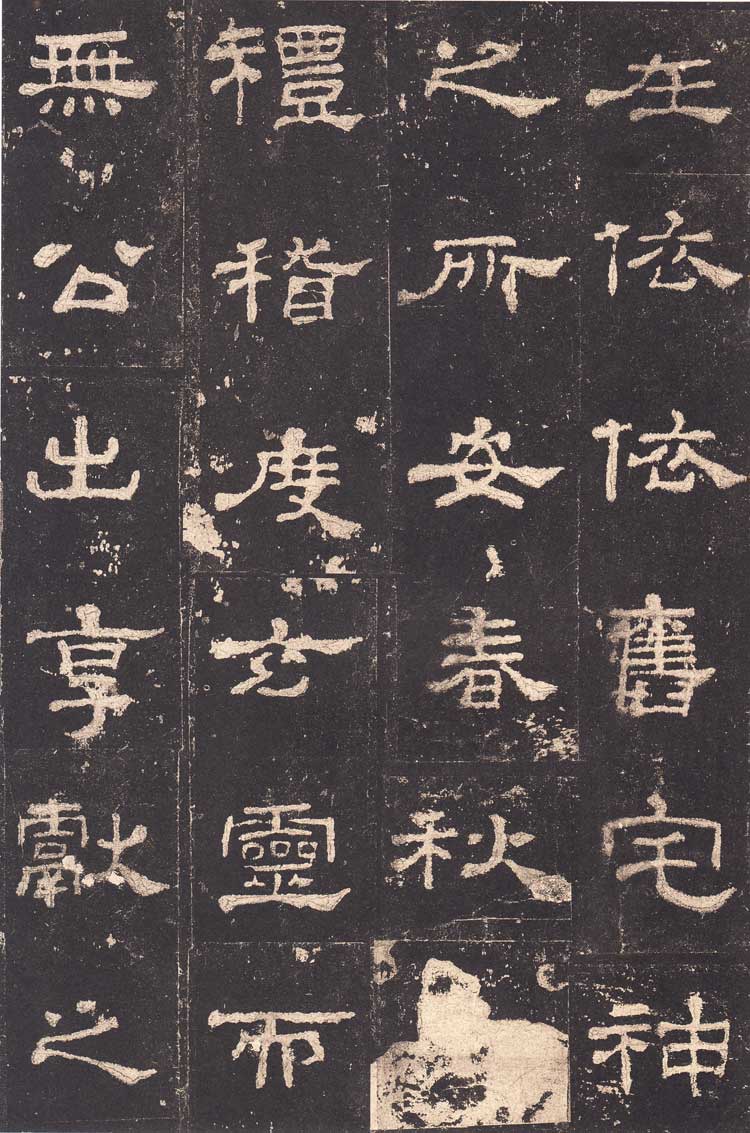
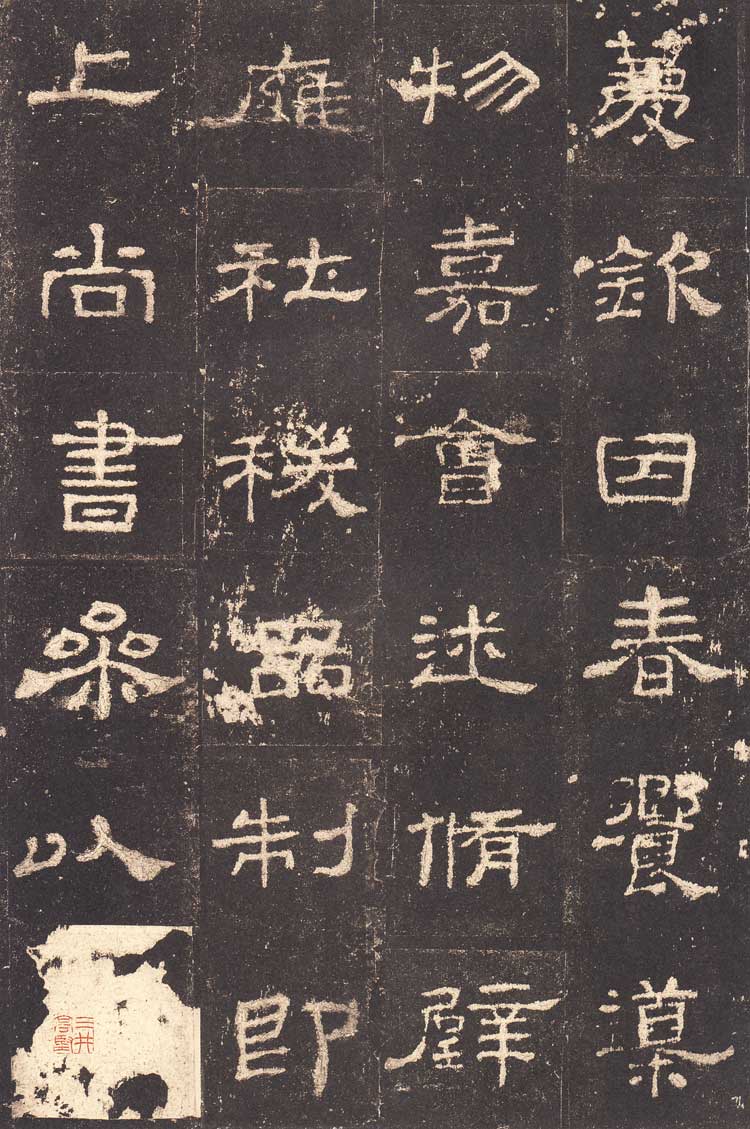
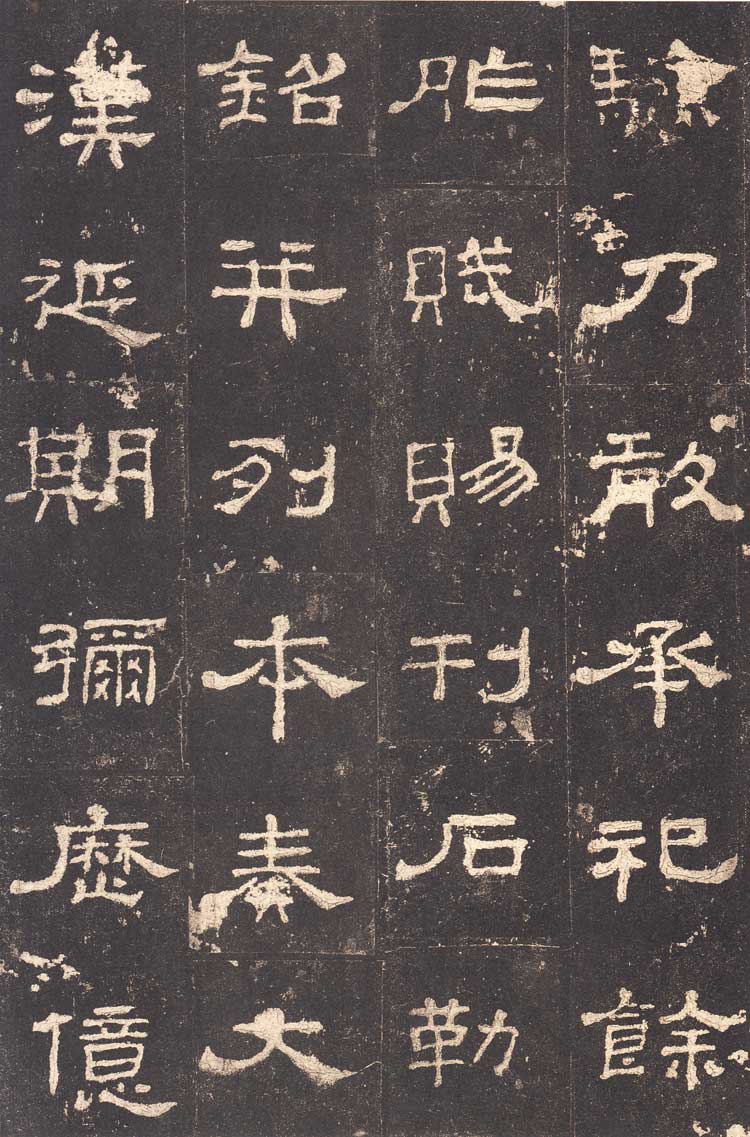
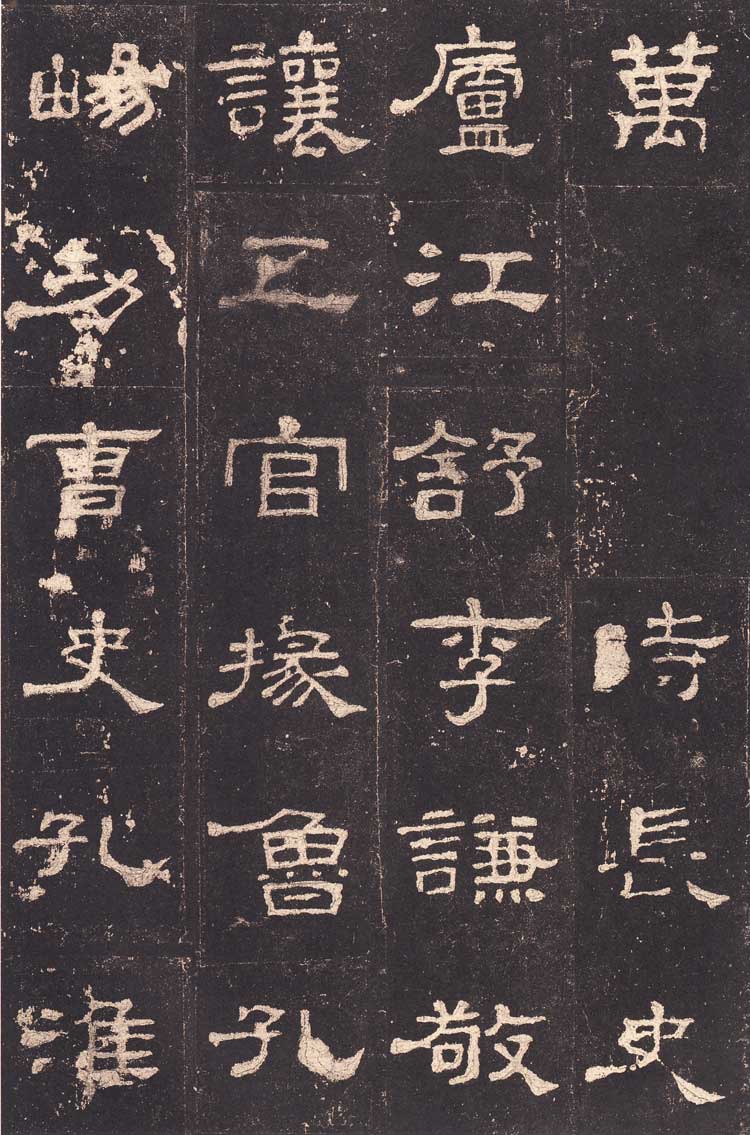
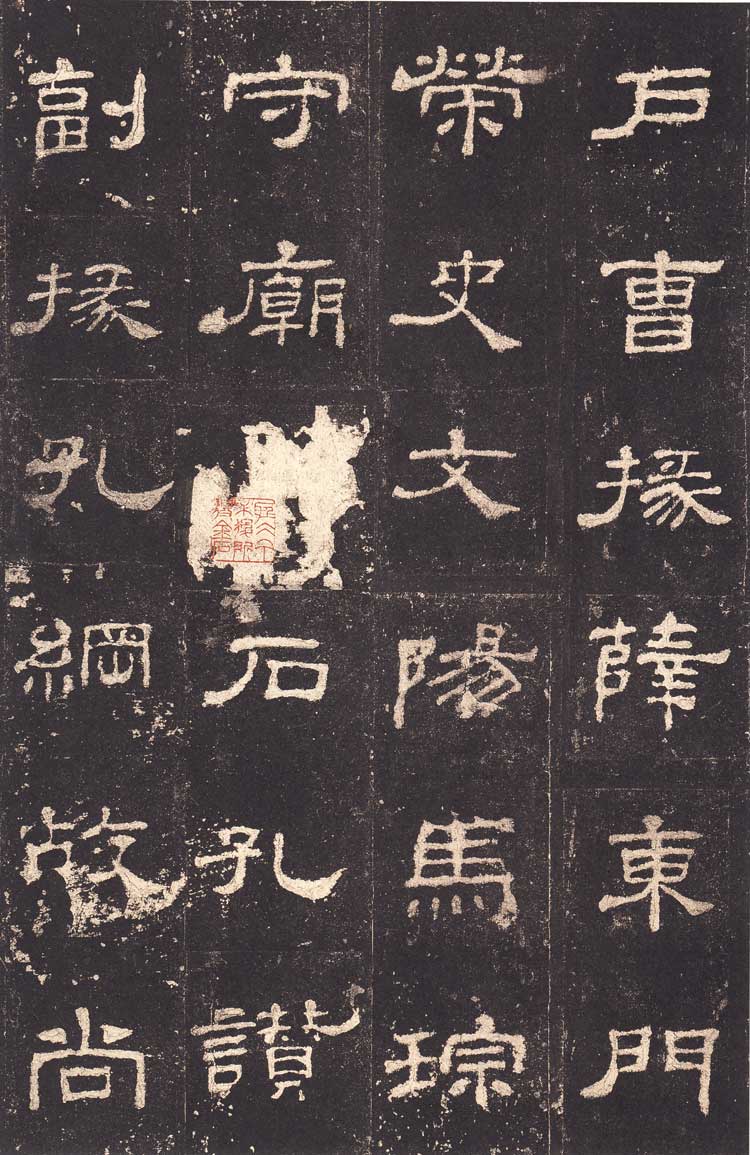
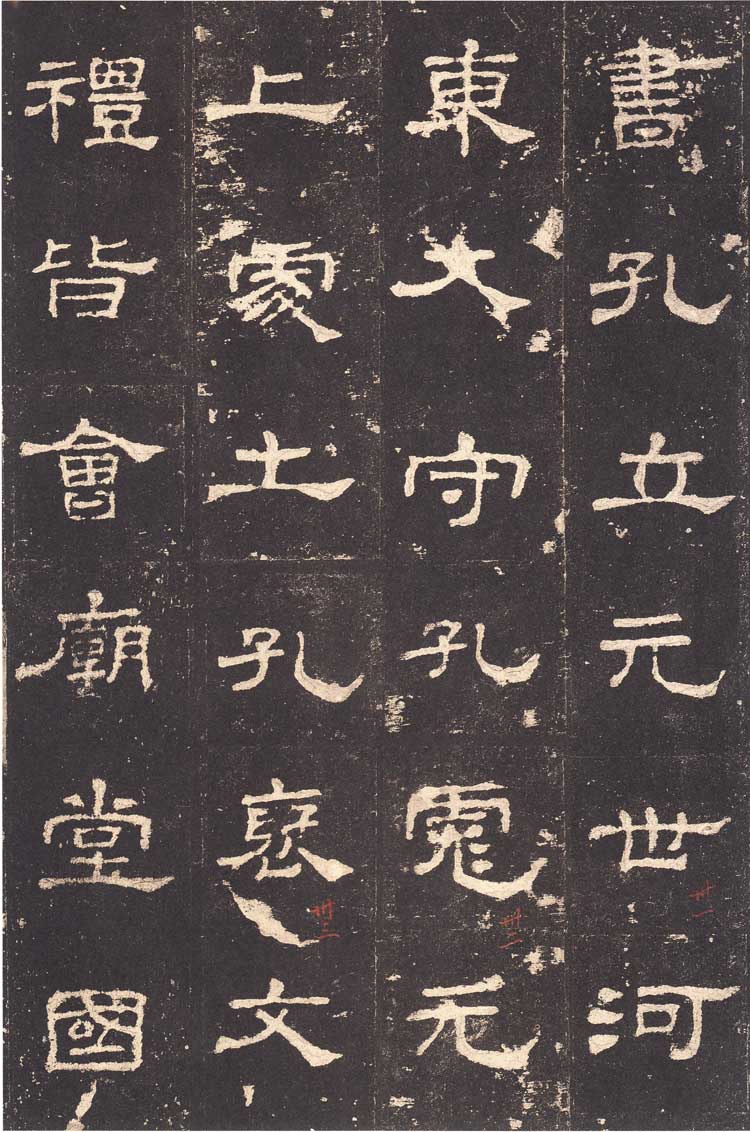
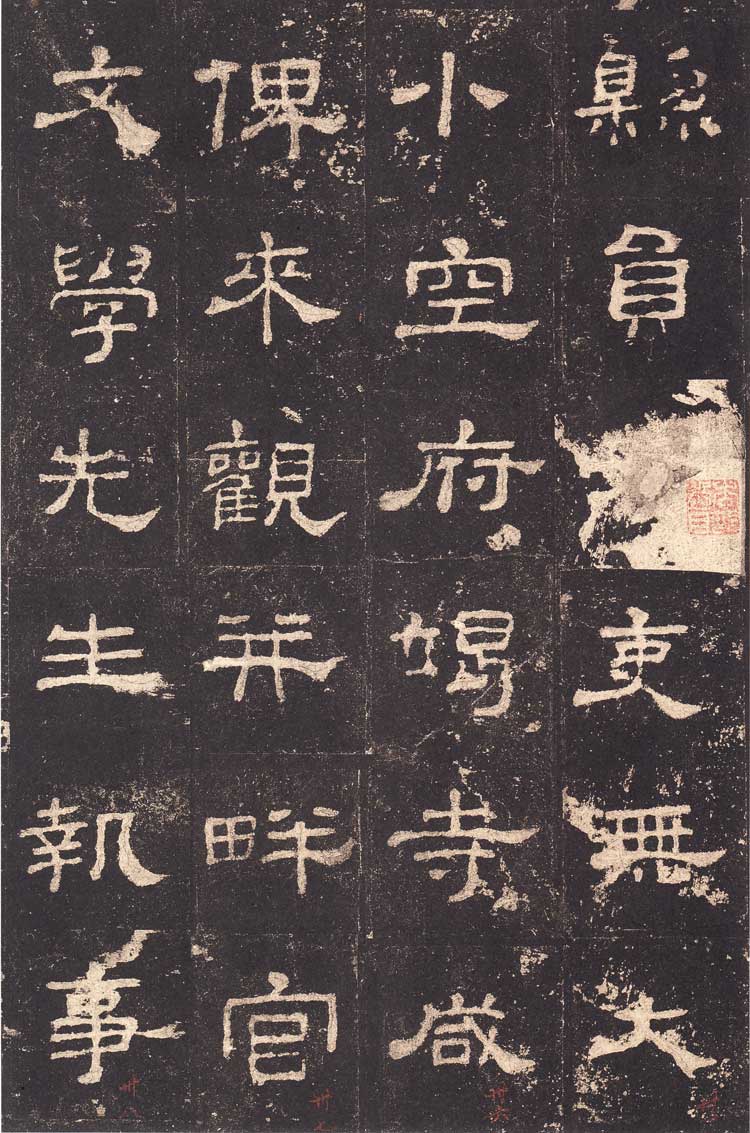
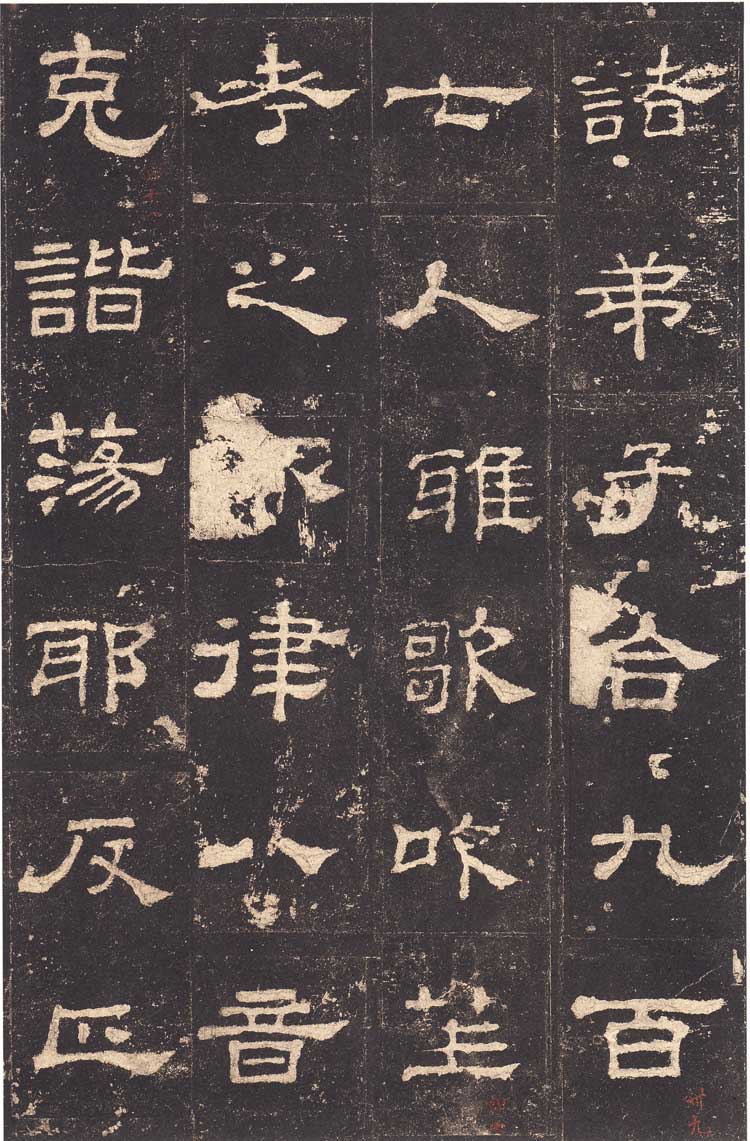
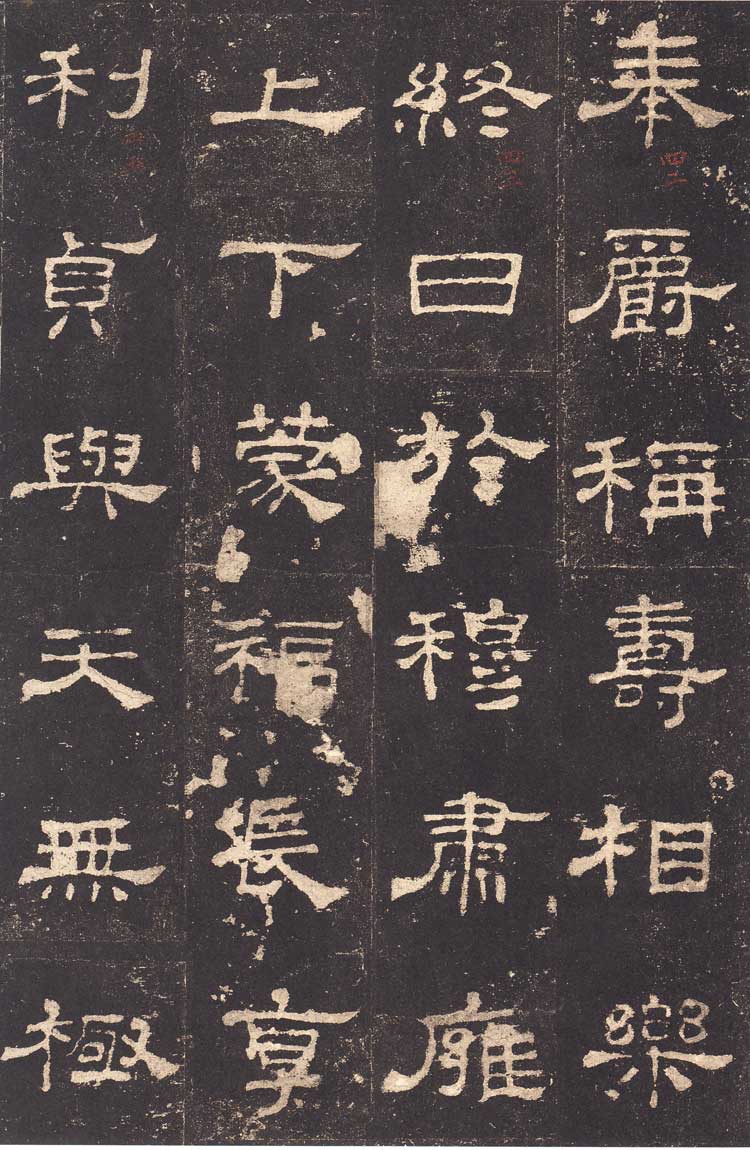
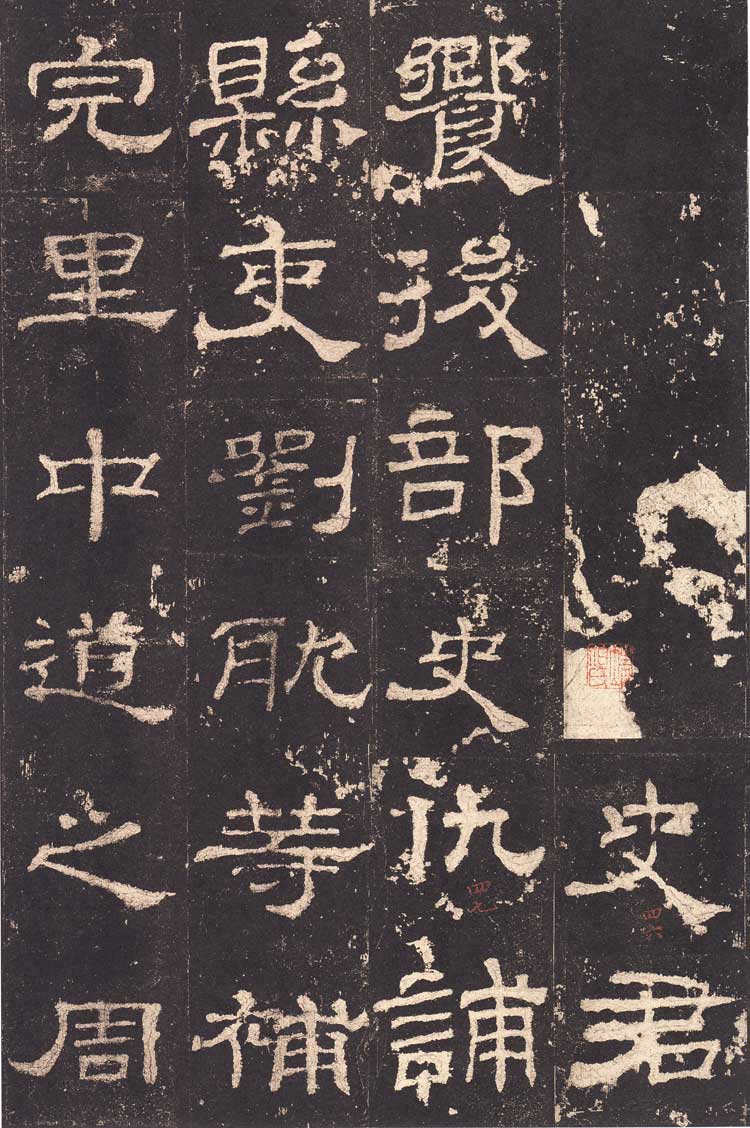
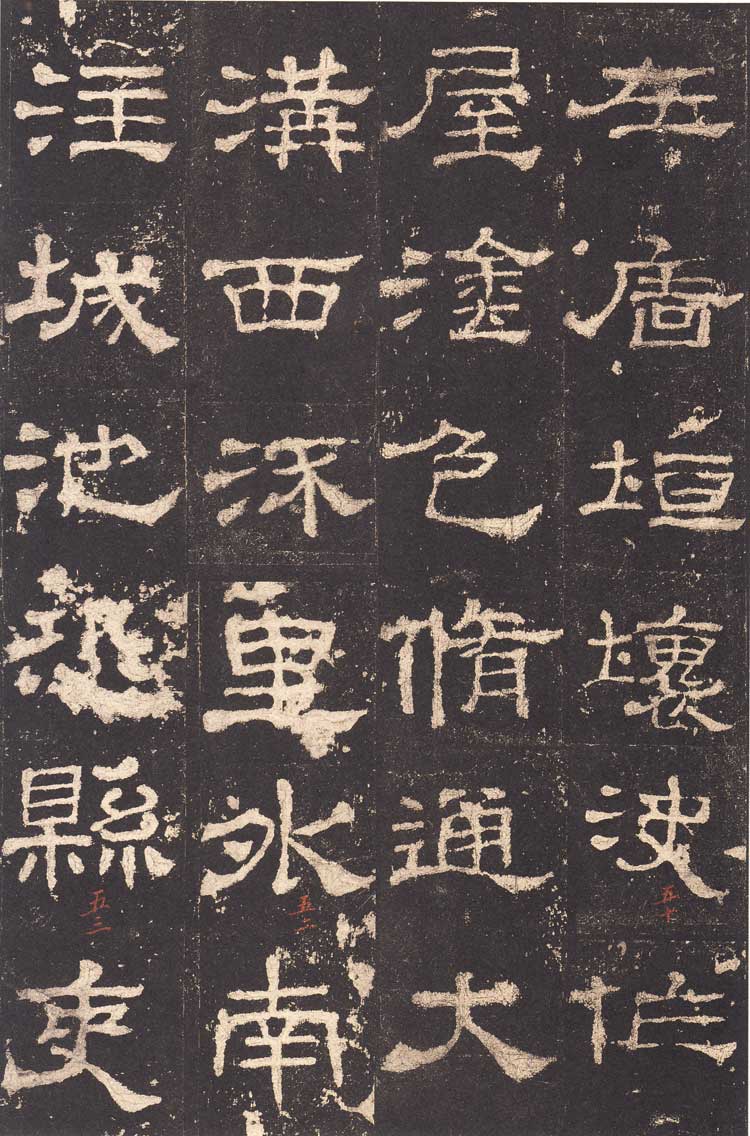
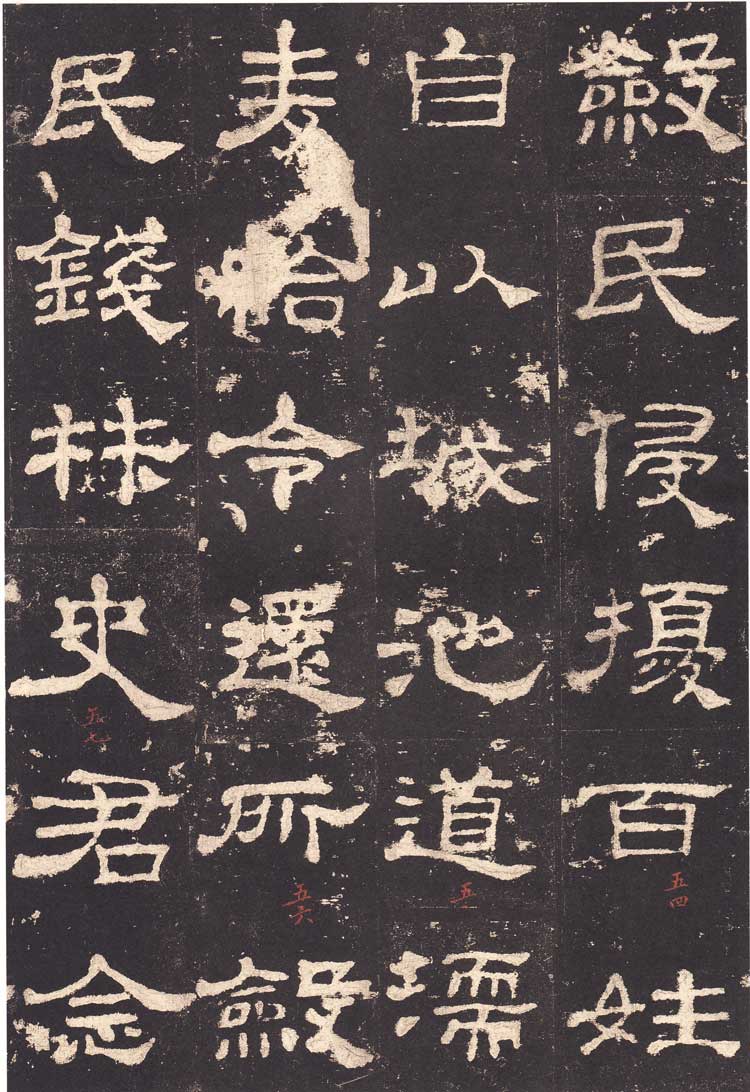
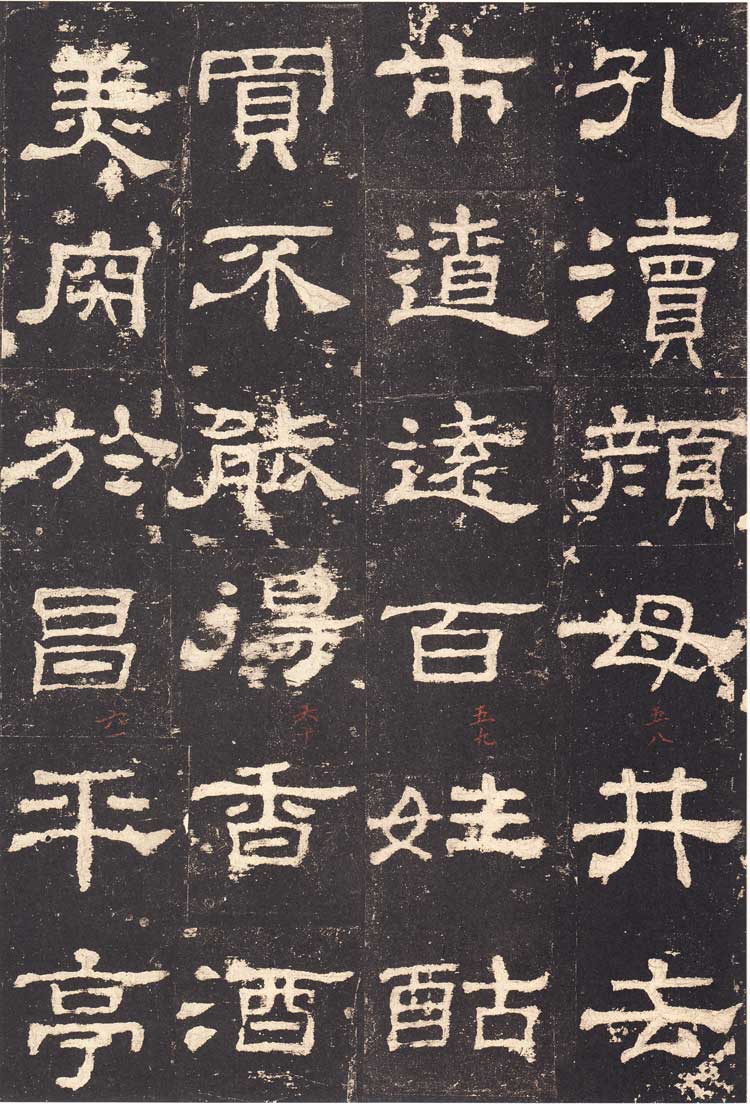
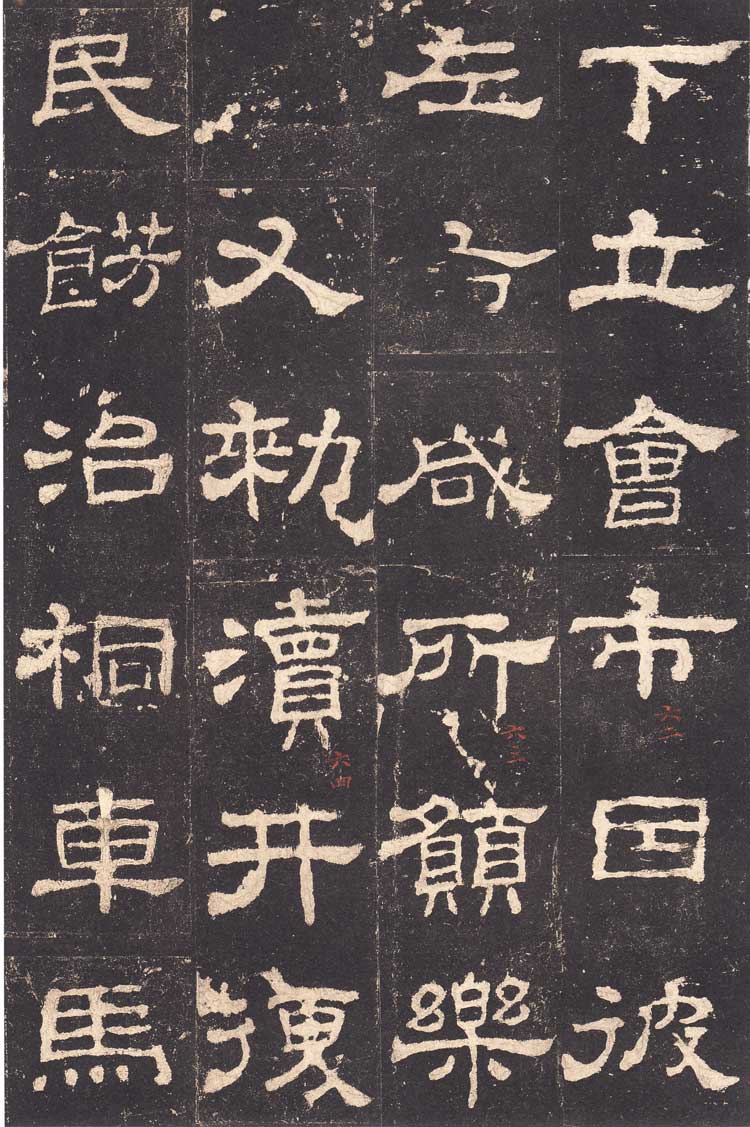
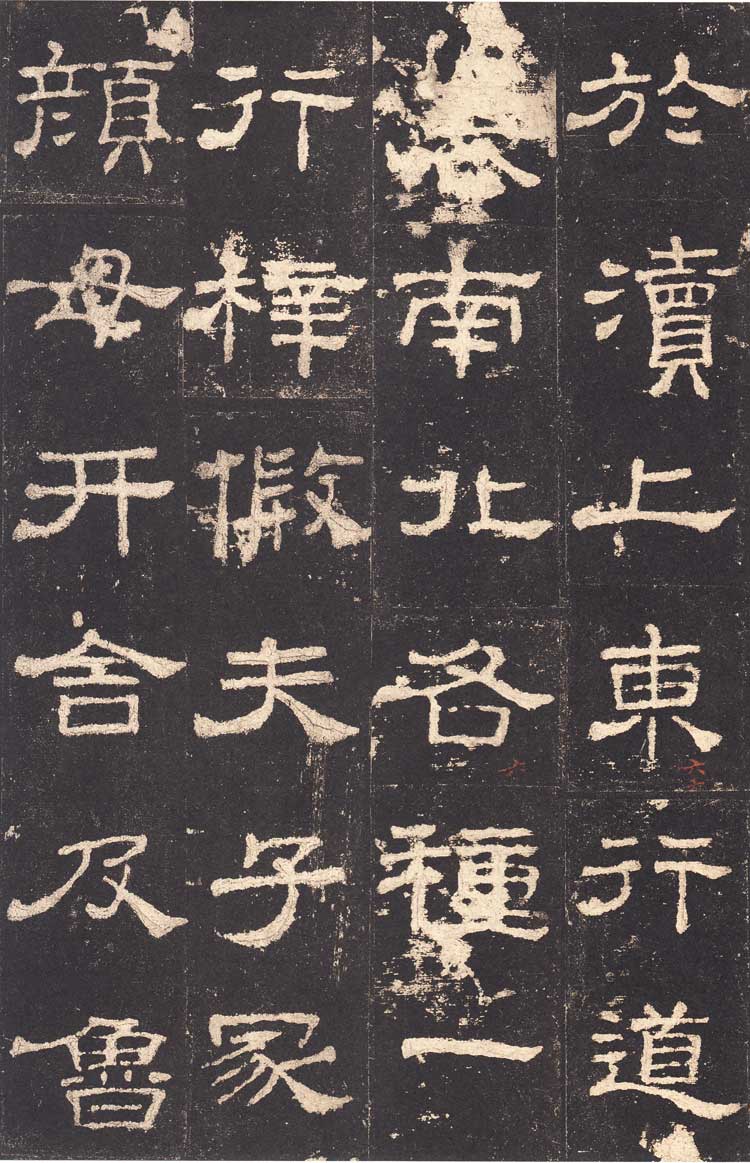
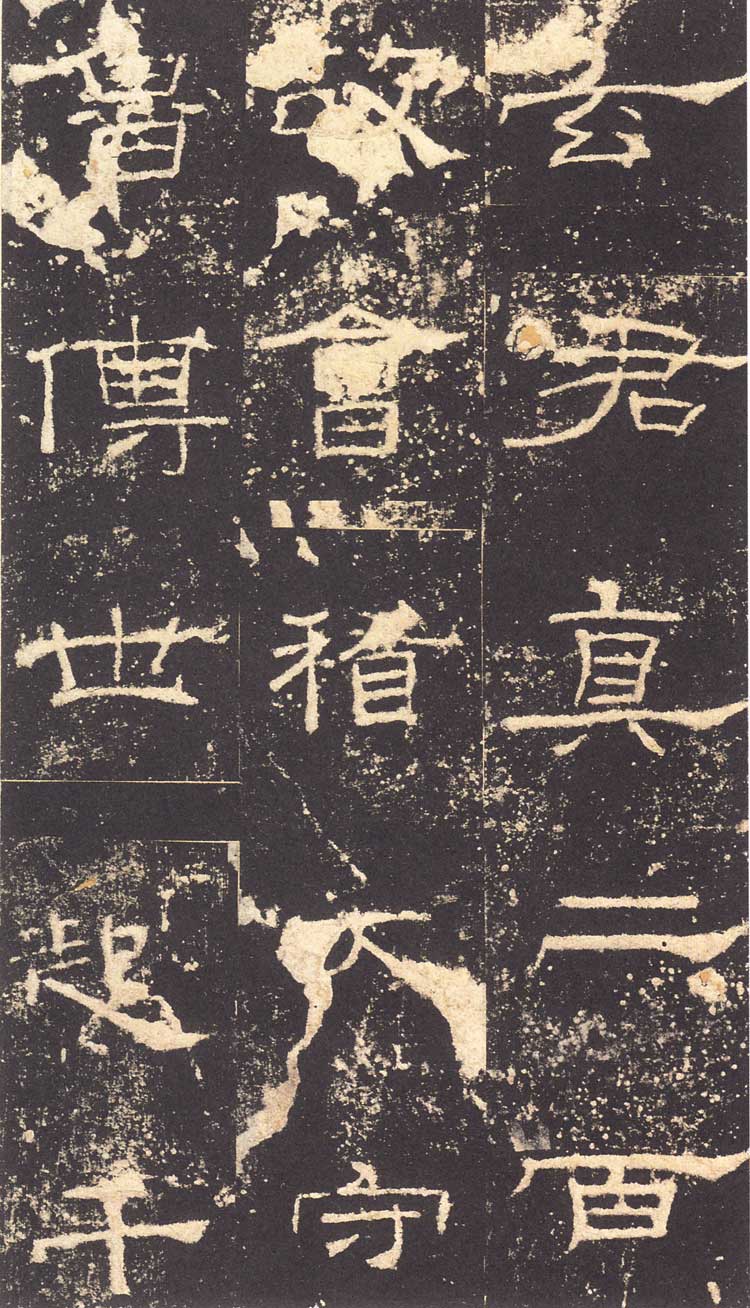
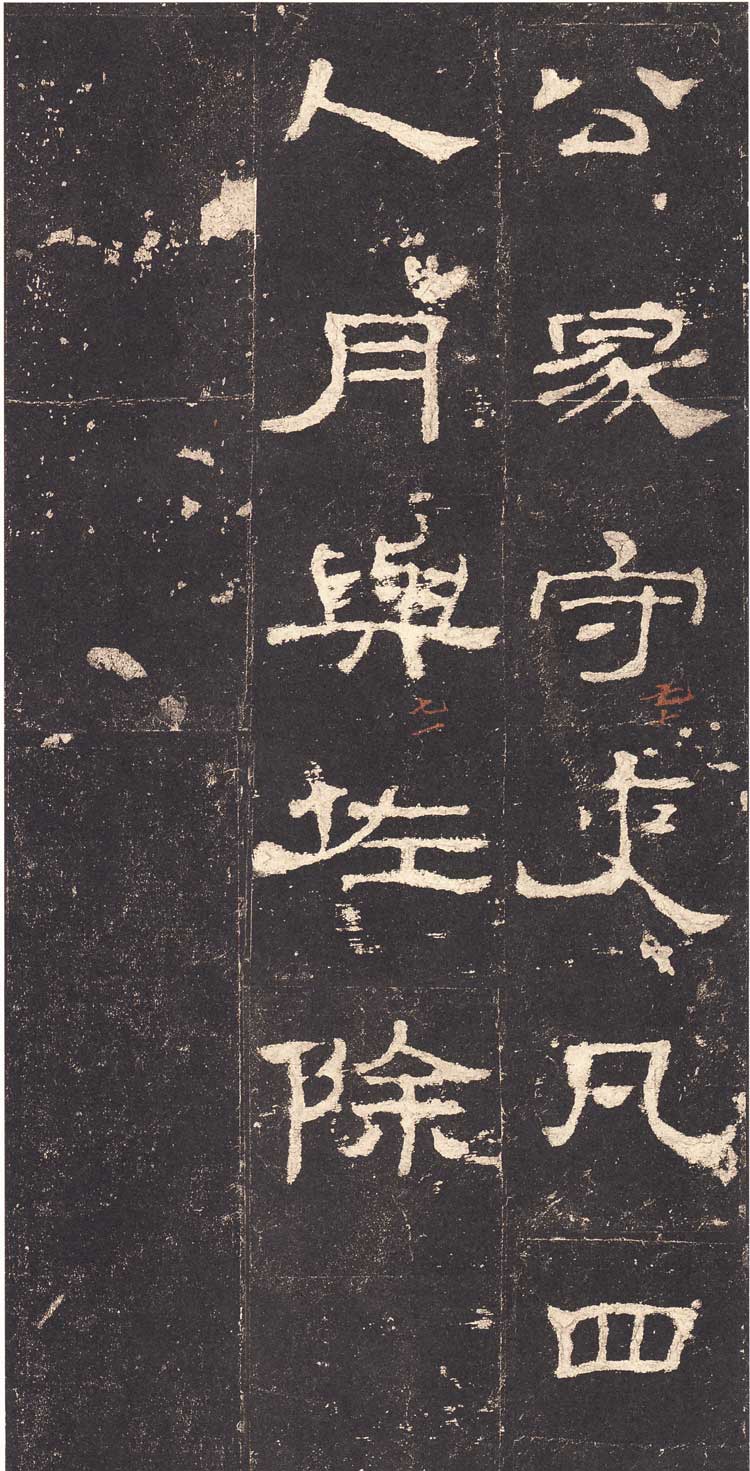
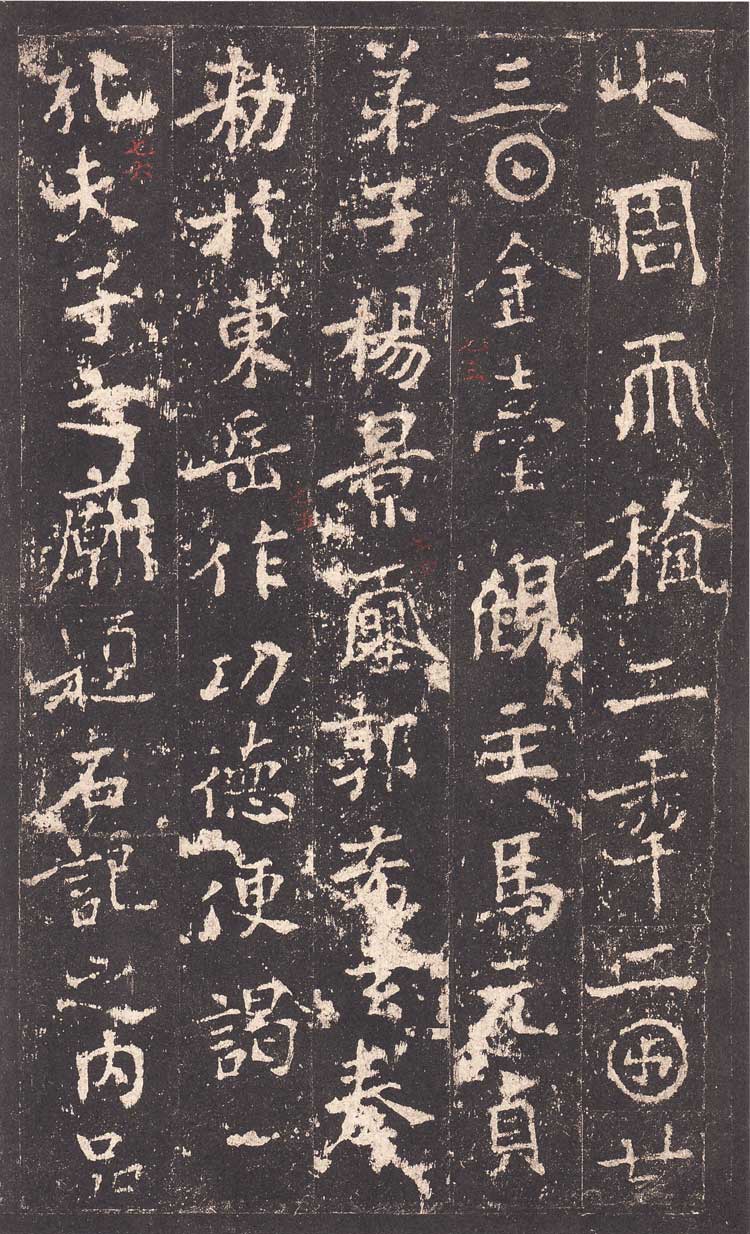
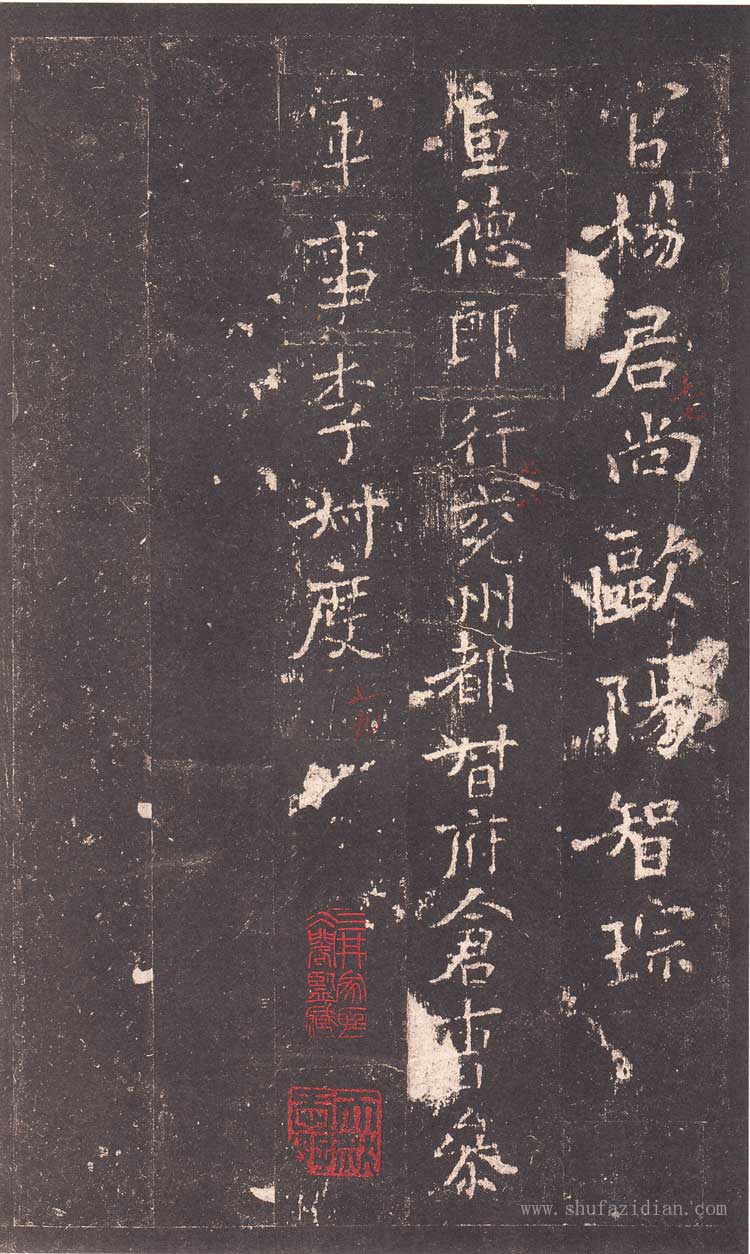
《史晨前碑》Inscription:
建宁二年三月癸卯朔七日己酉,鲁相臣晨,长史臣谦顿首死罪。上尚书:臣晨顿首顿首,死罪死罪。臣蒙厚恩,受任符守,得在奎娄,周孔旧寓,不能阐弘德政,恢崇壹变,夙夜忧怖,累息屏营。臣晨顿首顿首,死罪死罪。臣以建寜元年到官,行秋飨,饮酒畔宫,毕,复礼孔子宅,拜谒神坐,仰瞻榱桷,俯视几筵,灵所冯依,肃肃犹存,而无公出酒脯之祠,臣即自以奉钱,修上案食醊具,以叙小节,不敢空谒。臣伏念孔子,乾坤所挺,西狩获麟,为汉制作,故《孝经援神挈》曰:玄丘制命帝卯行。又《尚书·考灵耀》曰:丘生仓际,触期稽度为赤制。故作《春秋》,以明文命。缀纪撰书,修定礼义。臣以为素王稽古,德亚皇代。虽有褒成世享之封,四时来祭,毕即归国。臣伏见临璧雍日,祠孔子以大牢,长吏备爵,所以尊先师重教化也。夫封土为社,立稷而祀,皆为百姓兴利除害,以祈丰穰,《月令》祀百辟卿士有益于民。矧乃孔子,玄德焕炳,光于上下。而本国旧居,复礼之日,阙而不祀,诚朝廷圣恩所宜特加,臣寝息耿耿,情所思惟。臣辄依社稷出王家谷春秋行礼,以共烟祀。余胙赐先生执事。臣晨顿首顿首,死罪死罪。臣尽力思惟庶政,报称为效,增异辄上。臣晨诚惶诚恐,顿首顿首,死罪死罪。上尚书。时副言大傅、大尉、司徒、司空、大司农府治所部从事。昔在仲尼,汁光之精,大帝所挺,颜母毓灵,承敝遭衰,黑不代仓,周流应聘,叹凤不臻。自卫反鲁,养徒三千。获麟趣作,端门见征,血书着纪,黄玉响应。主为汉制,道审可行。乃作《春秋》,复演《孝经》。删定《六艺》,象与天谈。钩《河》擿《雒》,却揆未然。魏魏荡荡,与干比崇。
《史晨后碑》Inscription:
相河南史君讳晨字伯时,从越骑校尉拜,建宁元年四月十一日戊子到官,乃以令日拜谒孔子,望见阙观,式路虔跽,既至升堂,屏气拜手。祗肃屑僾,仿佛若在。依依旧宅,神之所安。春秋复礼,稽度玄灵;而无公出享献之荐,钦因春飨,导物嘉会,述修璧雍,社稯品制。即上尚书,参以符验。乃敢承祀,余胙赋赐。刊石勒铭,并列本奏。大汉延期,弥历亿万。时长史庐江舒李谦敬让,五官掾鲁孔畅,功曹史孔淮,户曹掾薛东门荣,史文阳马琮,守庙百石孔讃,副掾孔纲,故尚书孔立元世,河东大守孔彪元上,处土孔褒文礼,皆会庙堂,国县员冗,吏无大小,空府竭寺,咸俾来观。并畔官文学先生、执事诸弟子,合九百七人,雅歌吹笙,考之六律,八音克谐,荡邪反正,奉爵称寿,相乐终日。于穆肃雍,上下蒙福,长享利贞,与天无极。
史君飨后,部史仇誧,县吏刘耽等,补完里中道之周左墙垣坏决,作屋涂色,修通大沟,西流里外,南注城池。恐县吏敛民,侵扰百姓,自以城池道濡麦给令,还所敛民钱材。
史君念孔渎颜母井去市辽远,百姓酤买,不能得香酒美肉,于昌平亭下立会市,因彼左右,咸所愿乐。
又敕:渎井,复民饬治,桐车马于渎上,东行道,表南北,各种一行梓。
假夫子冢颜母开舍及鲁公冢守吏凡四人,月与佐除。

